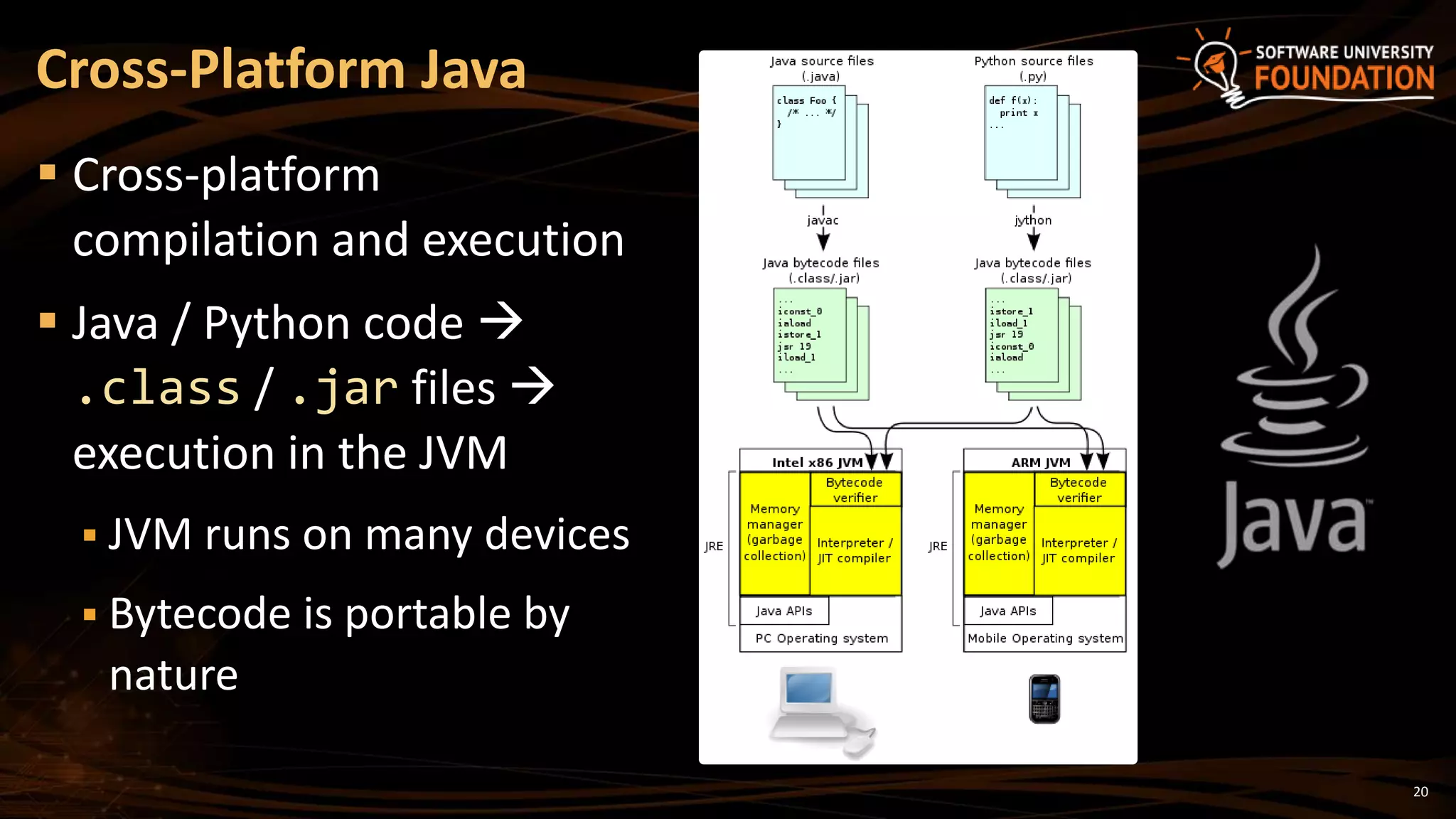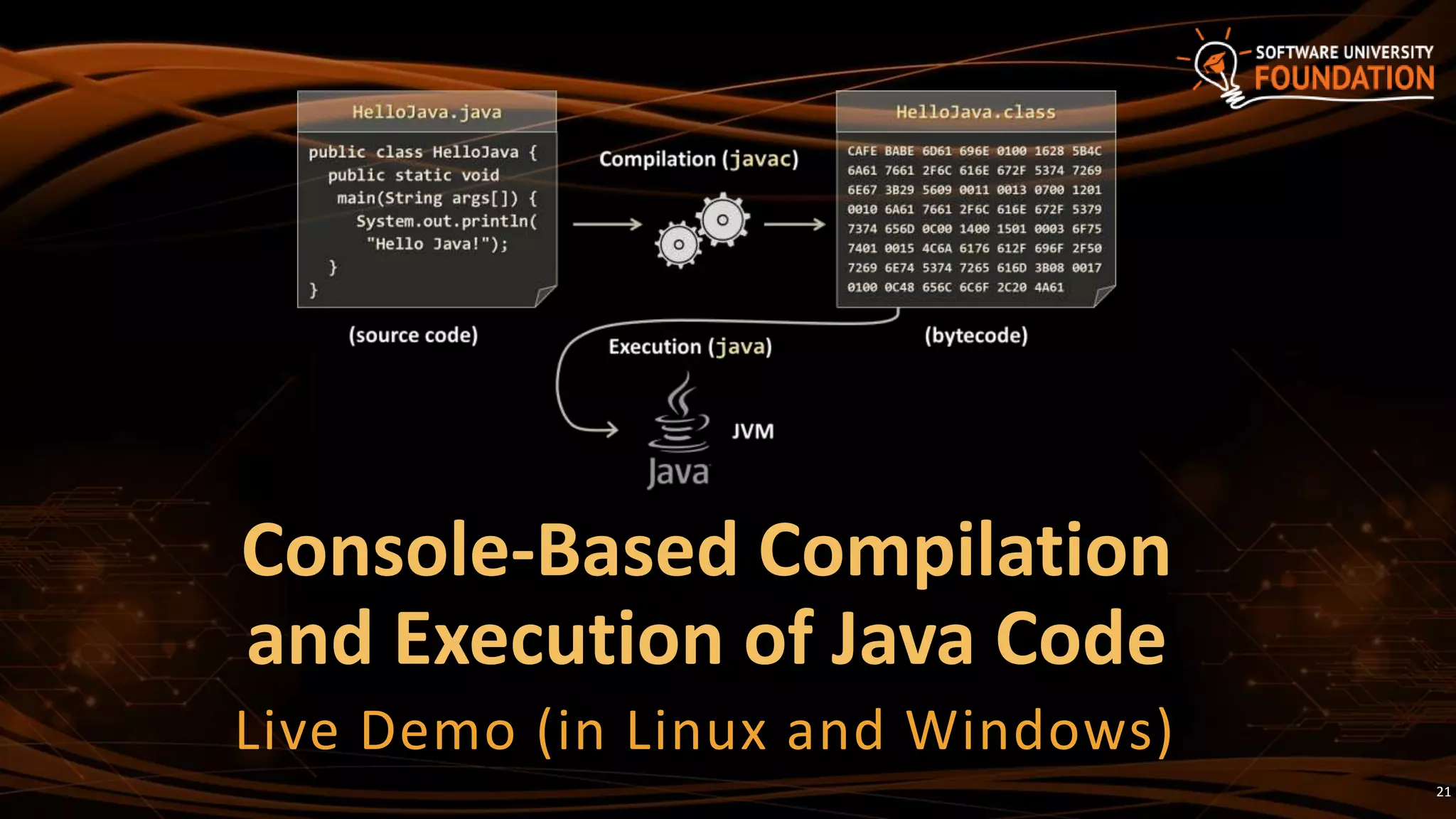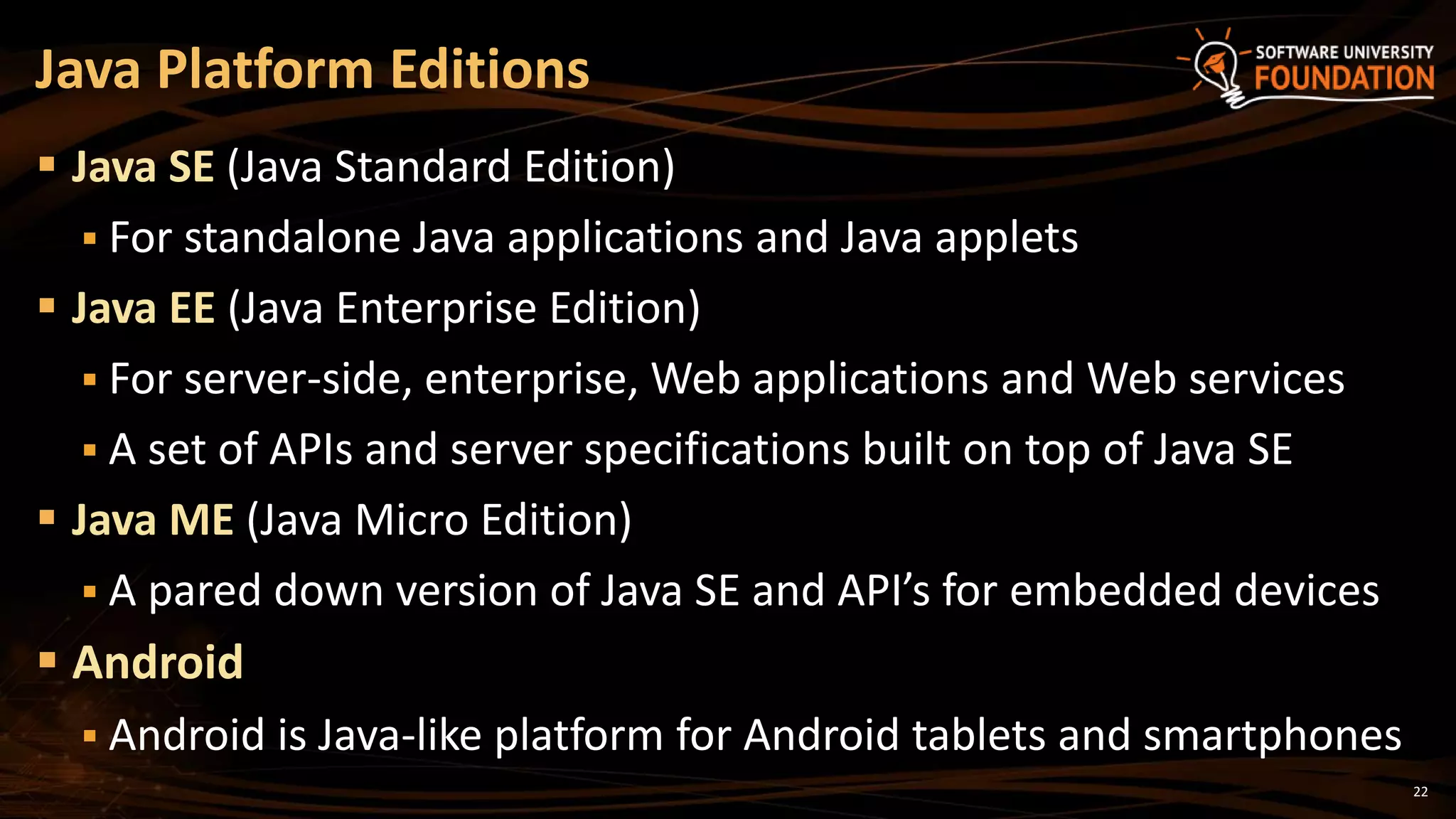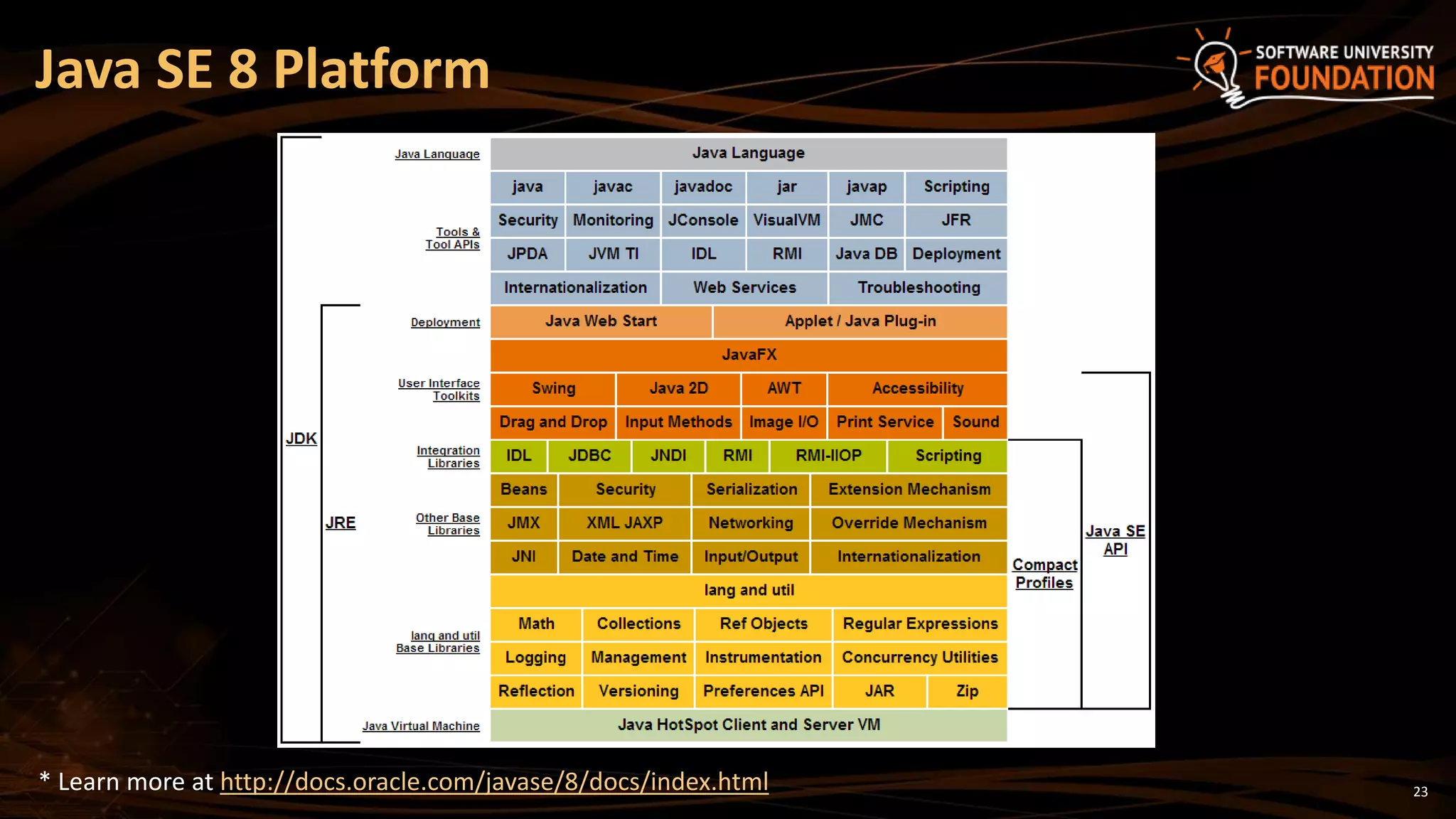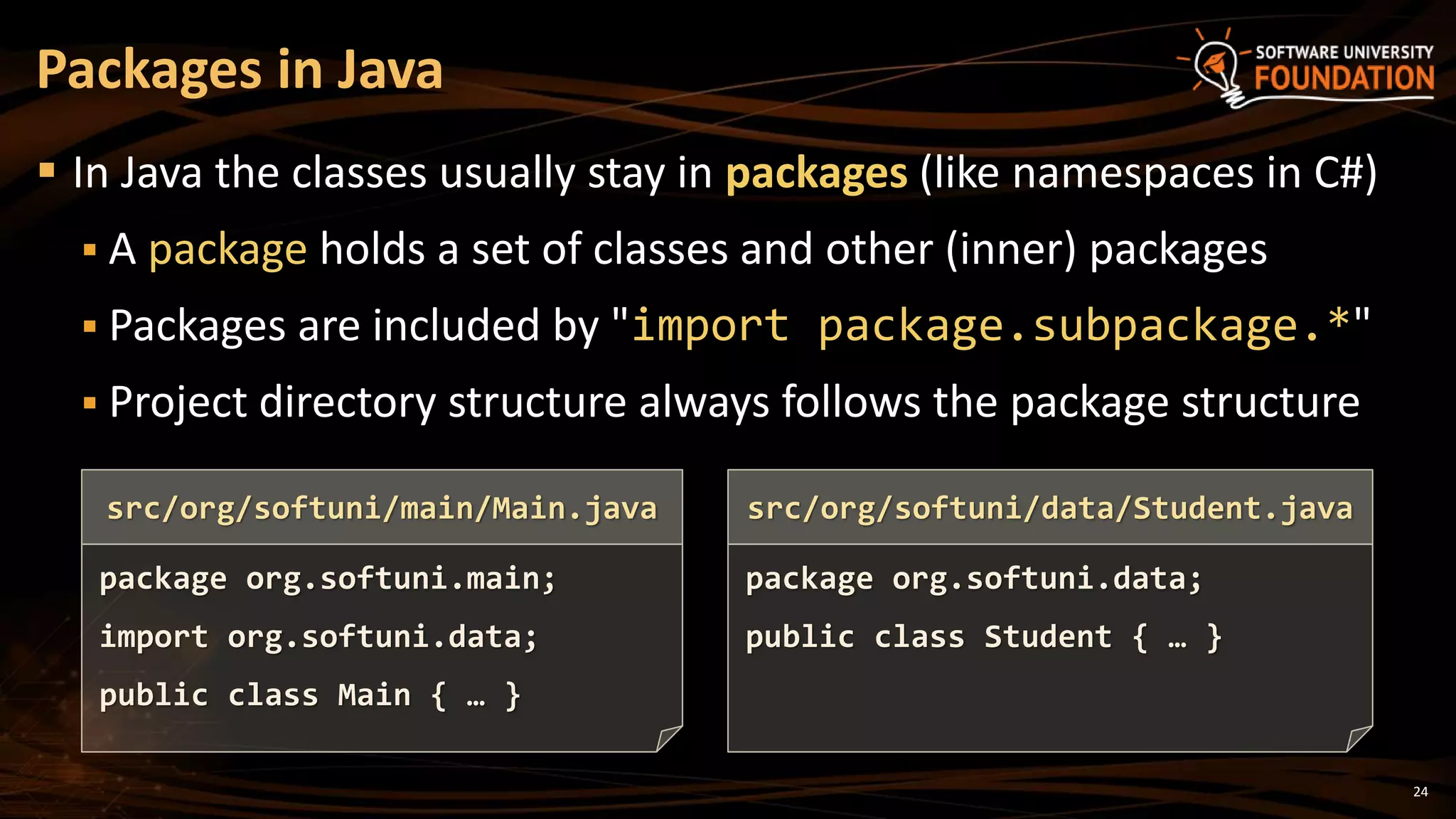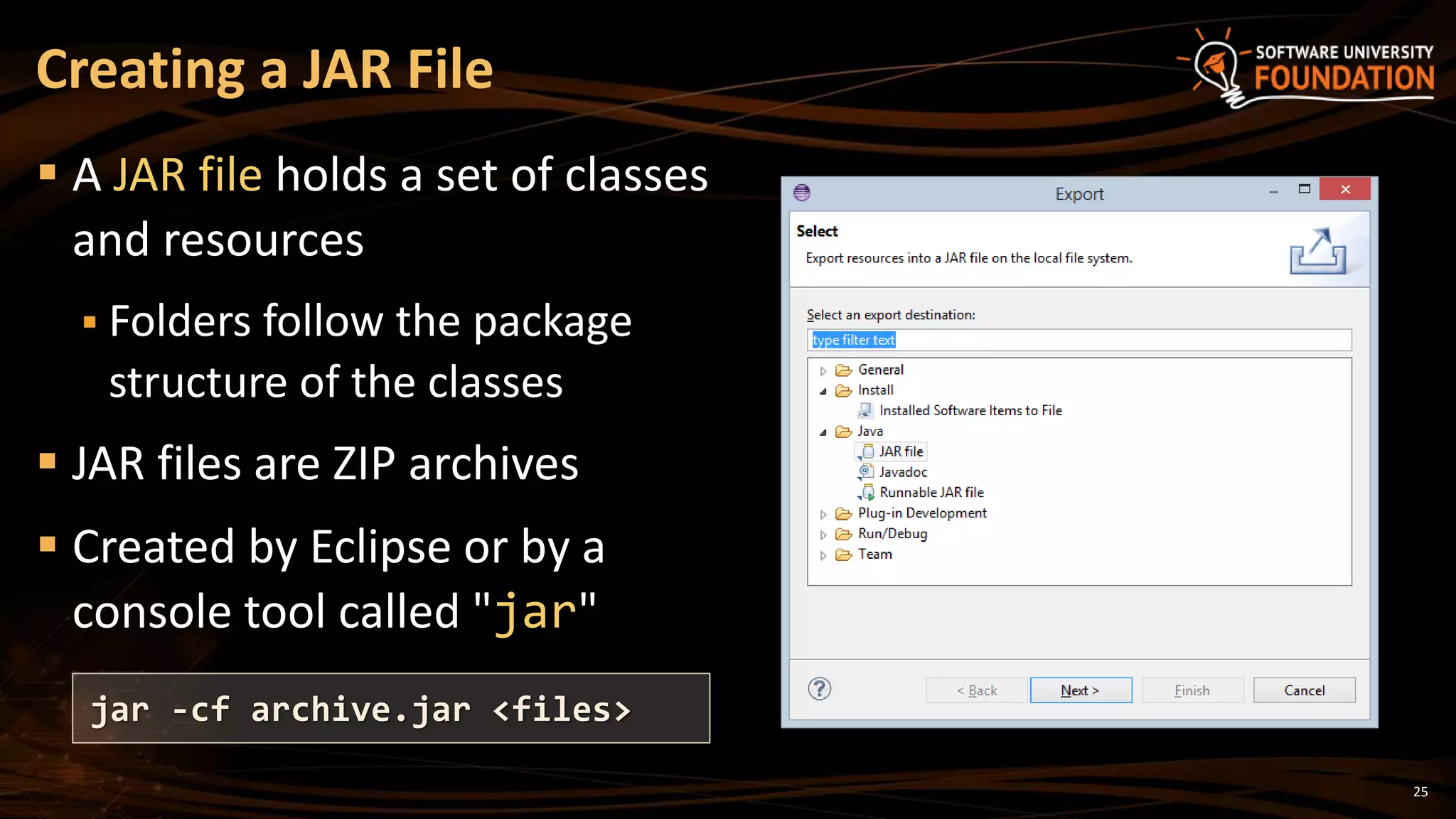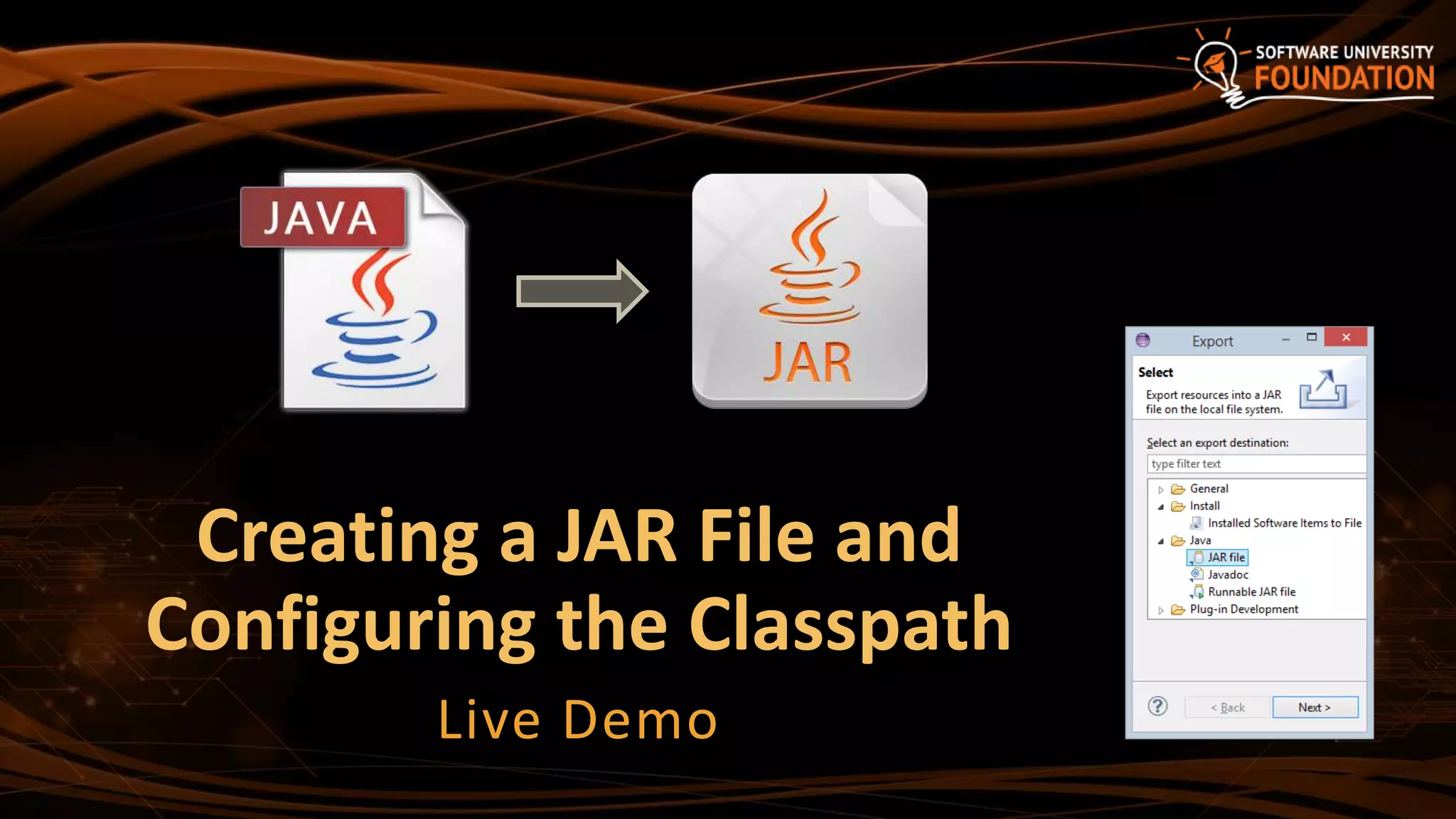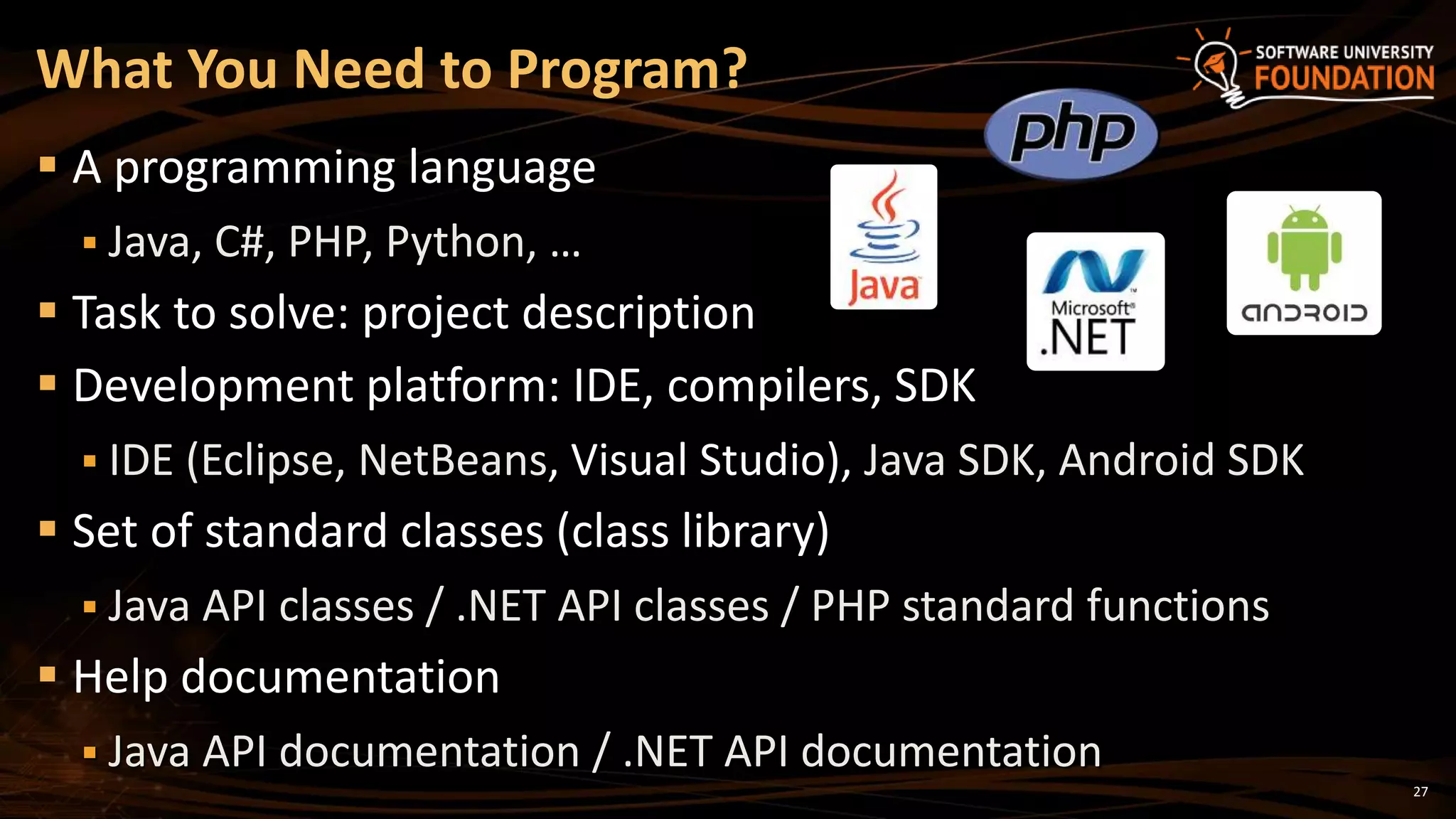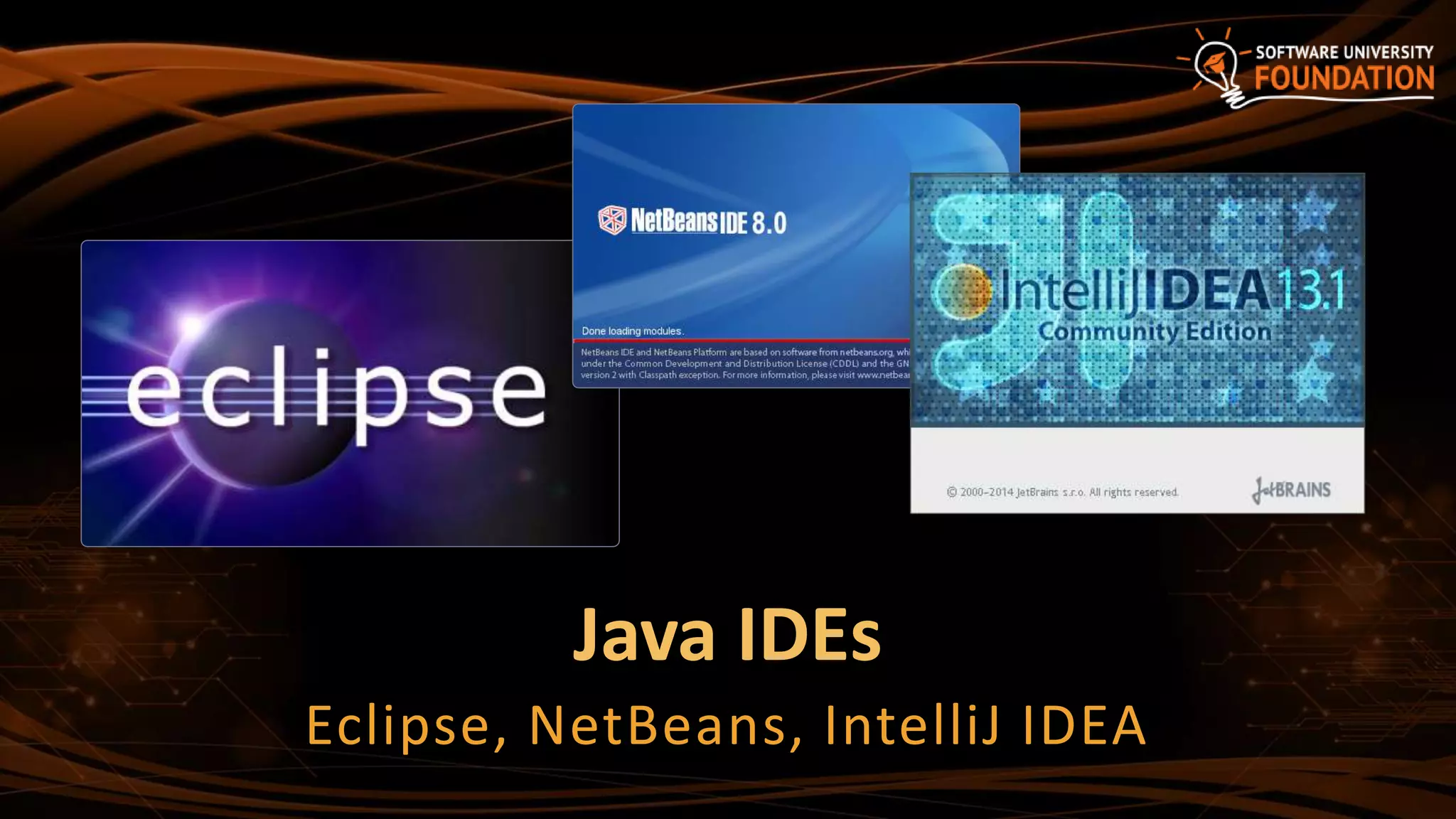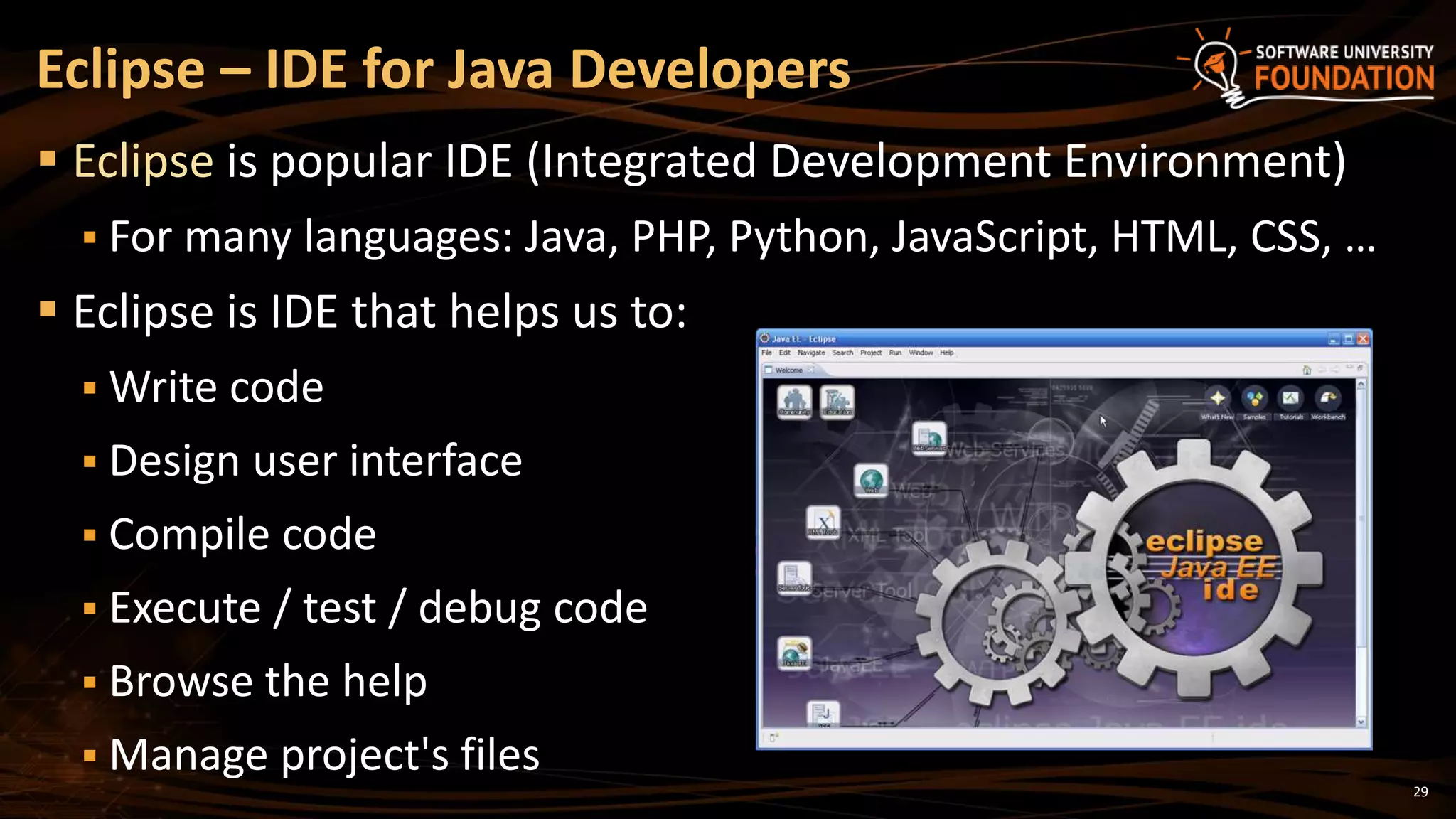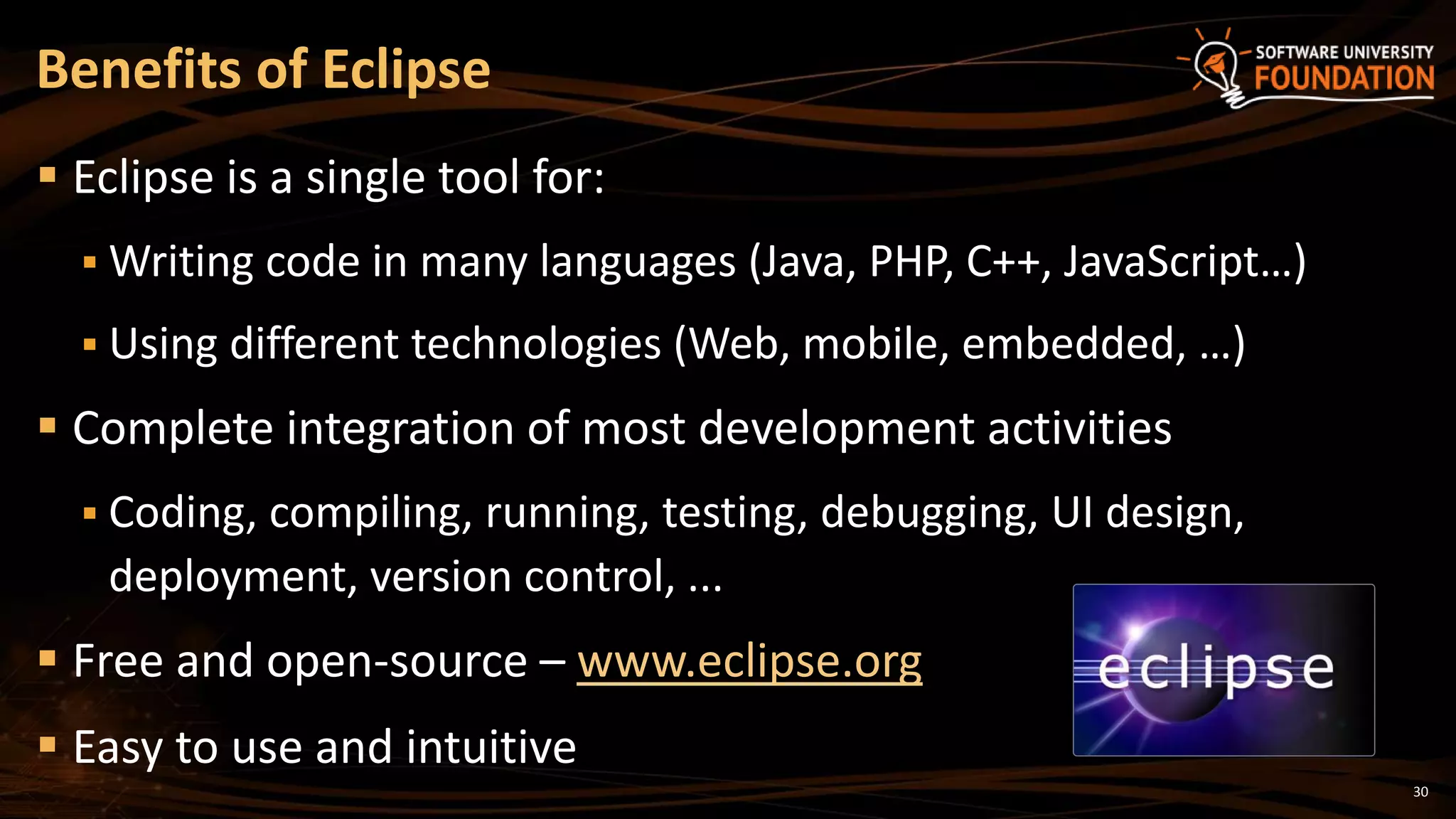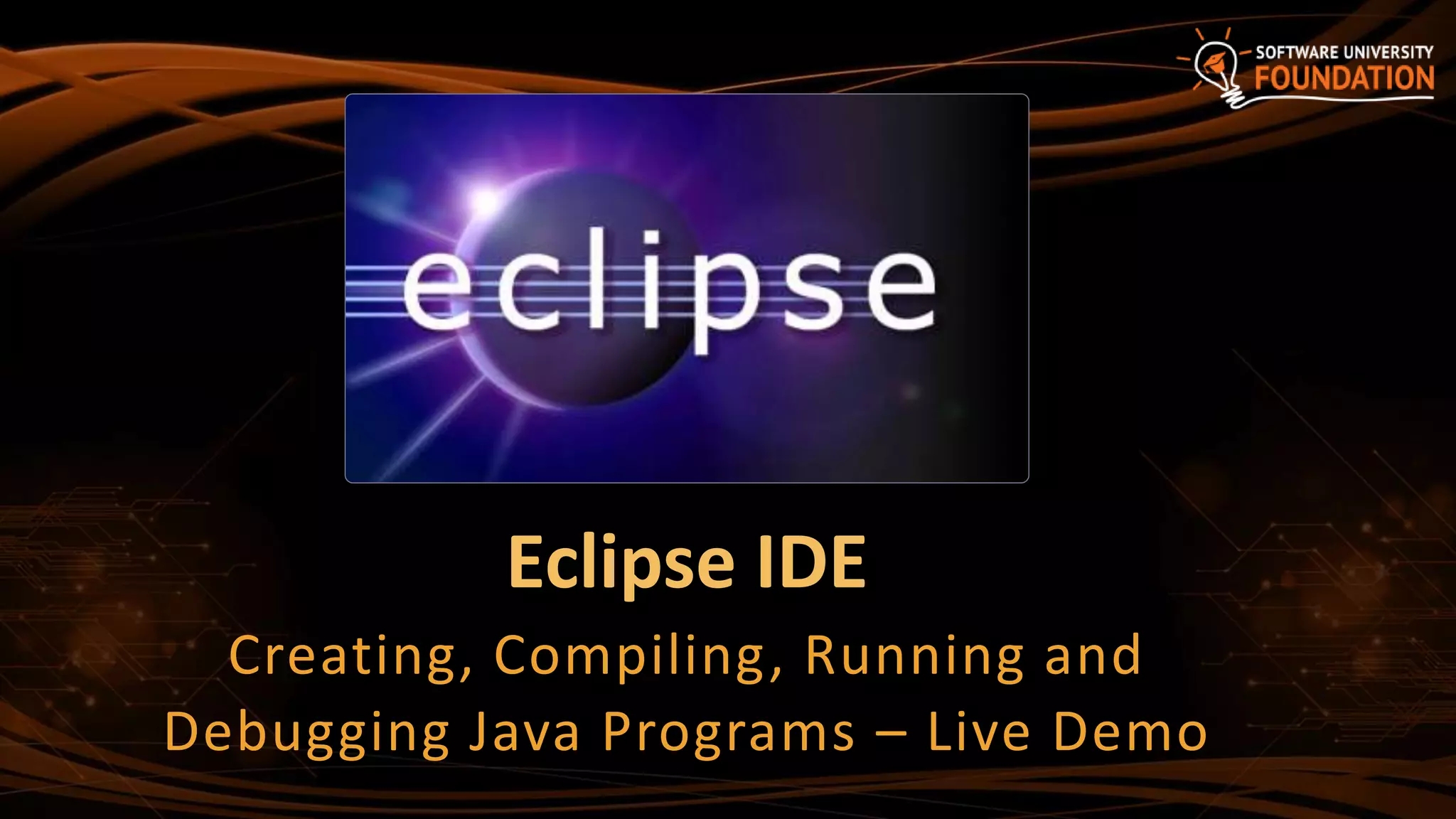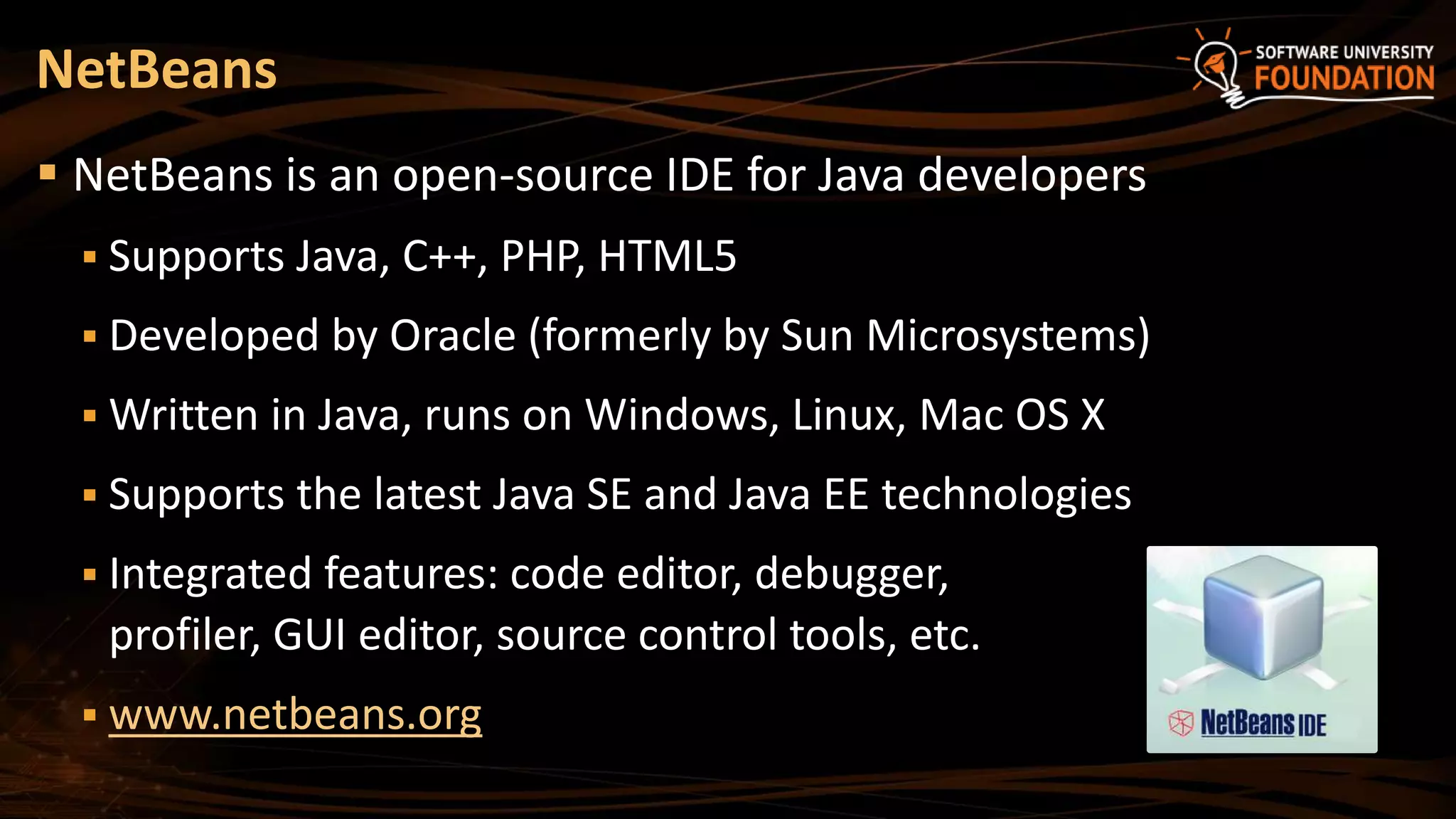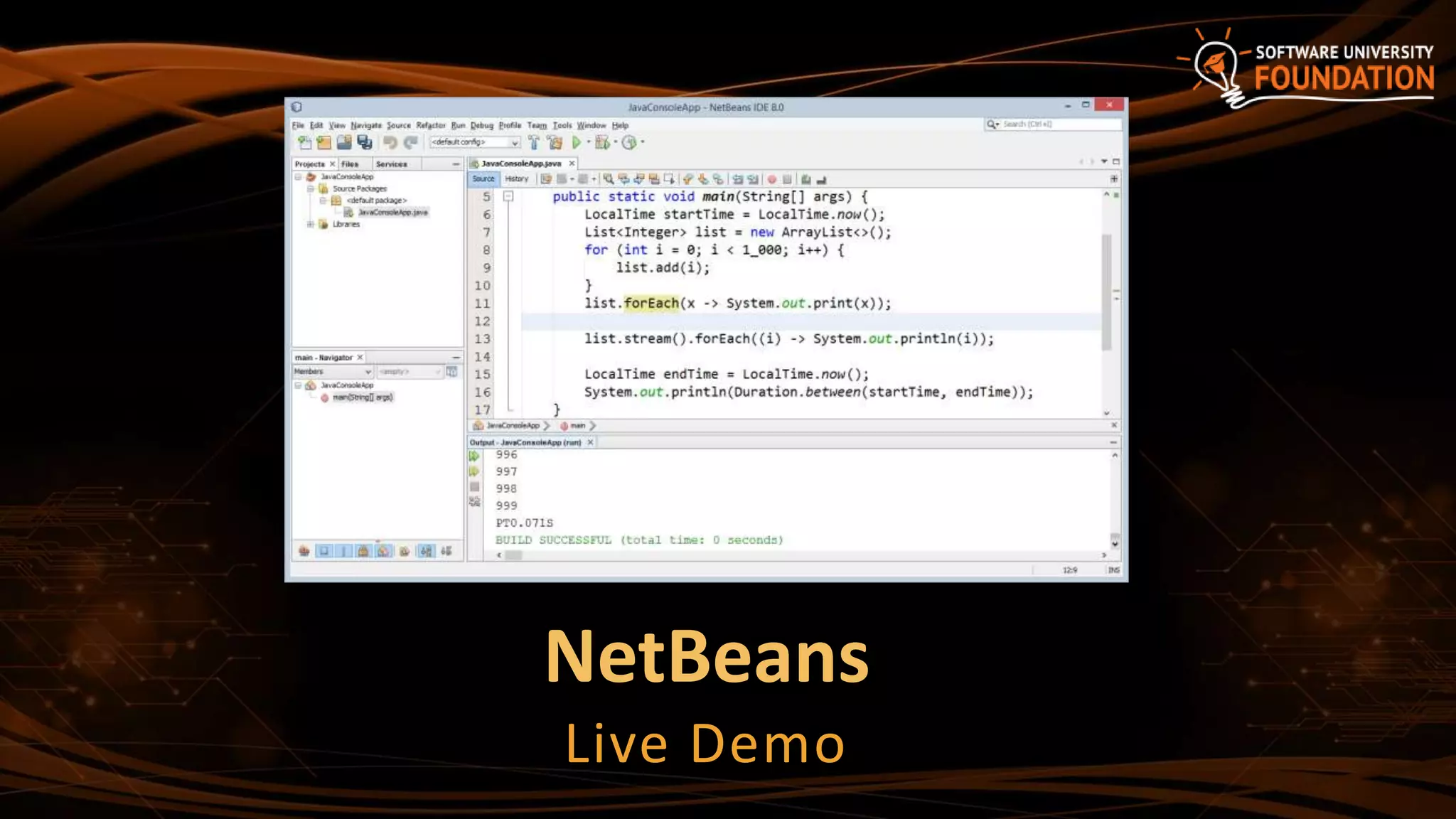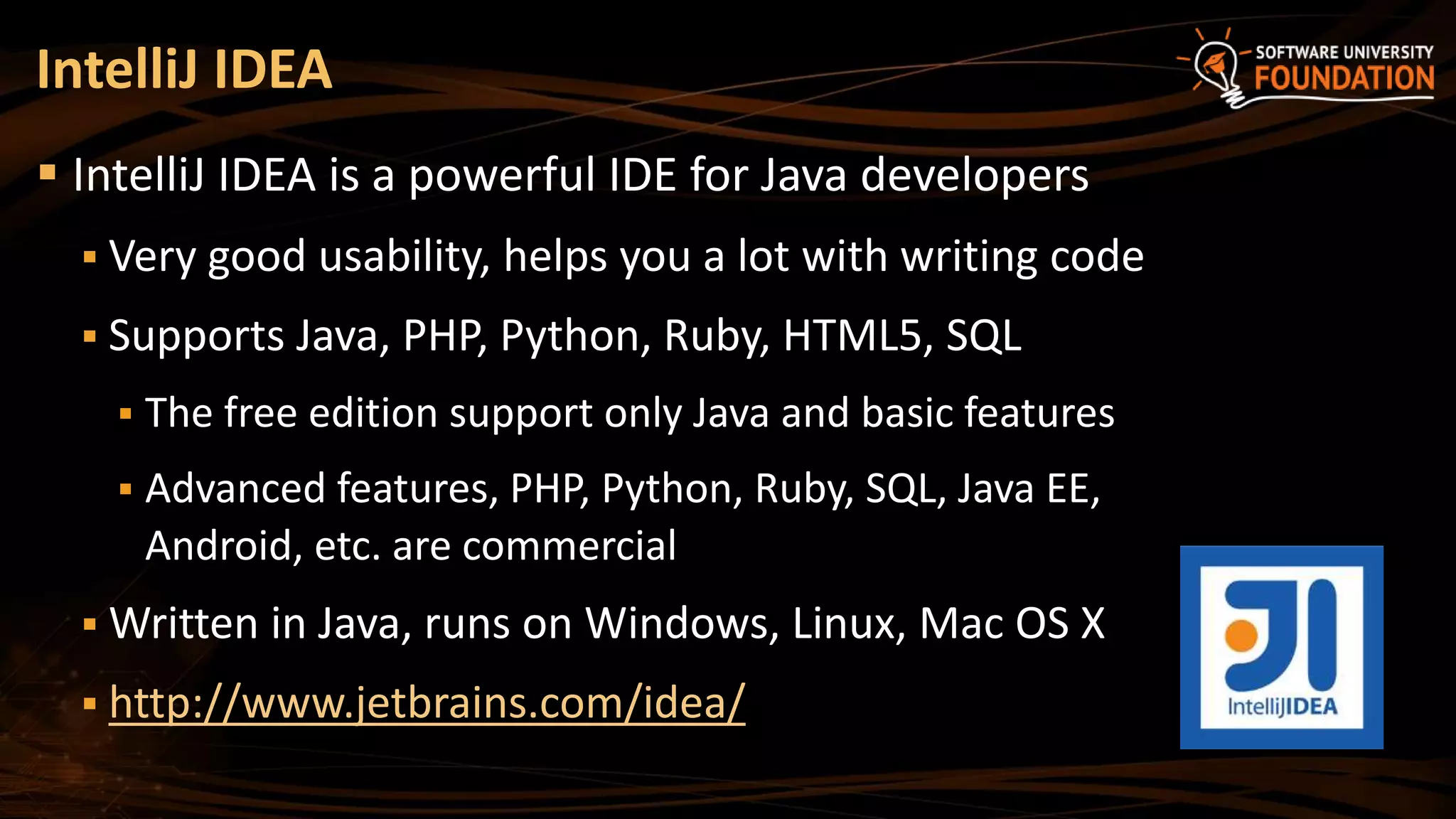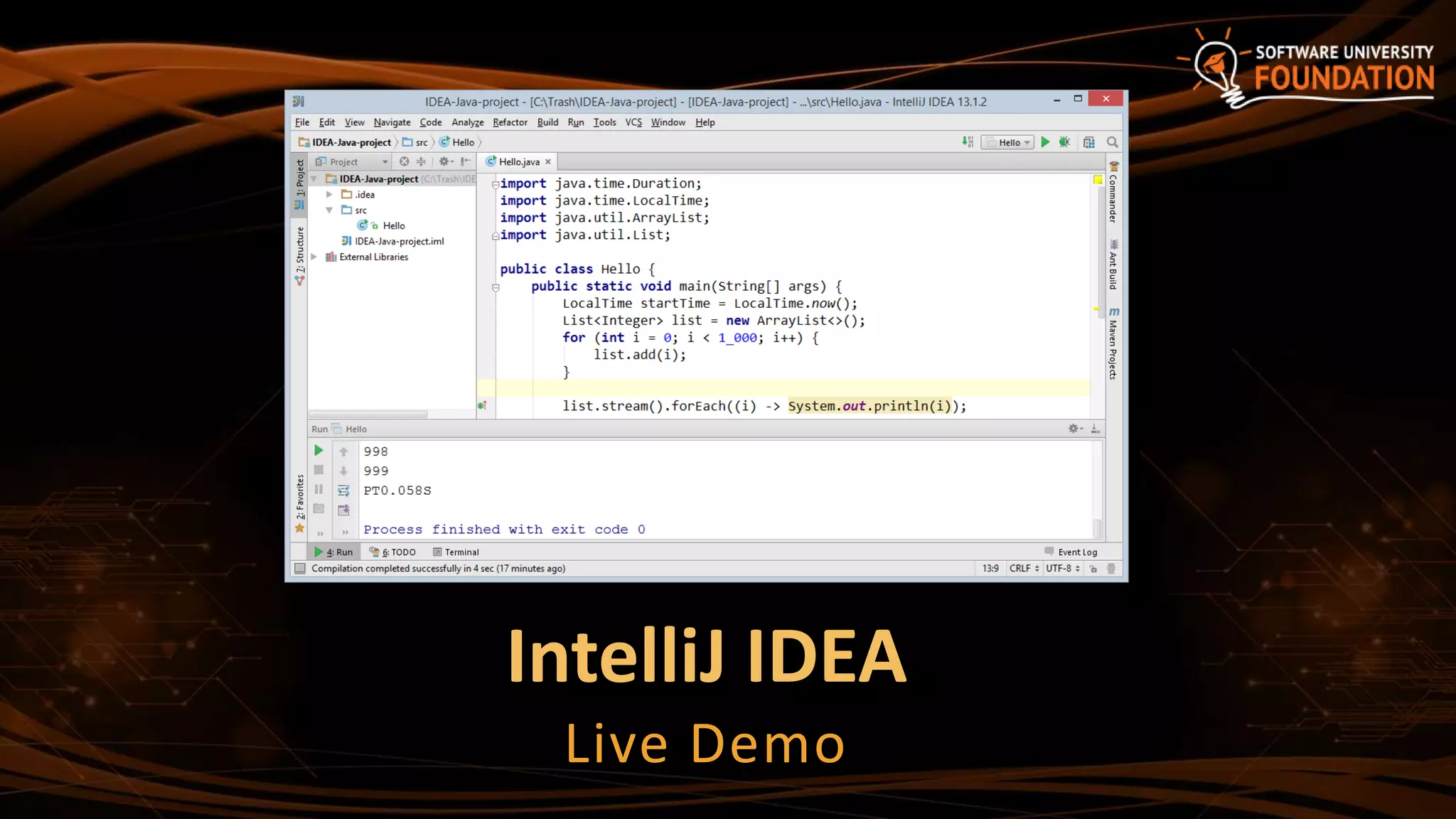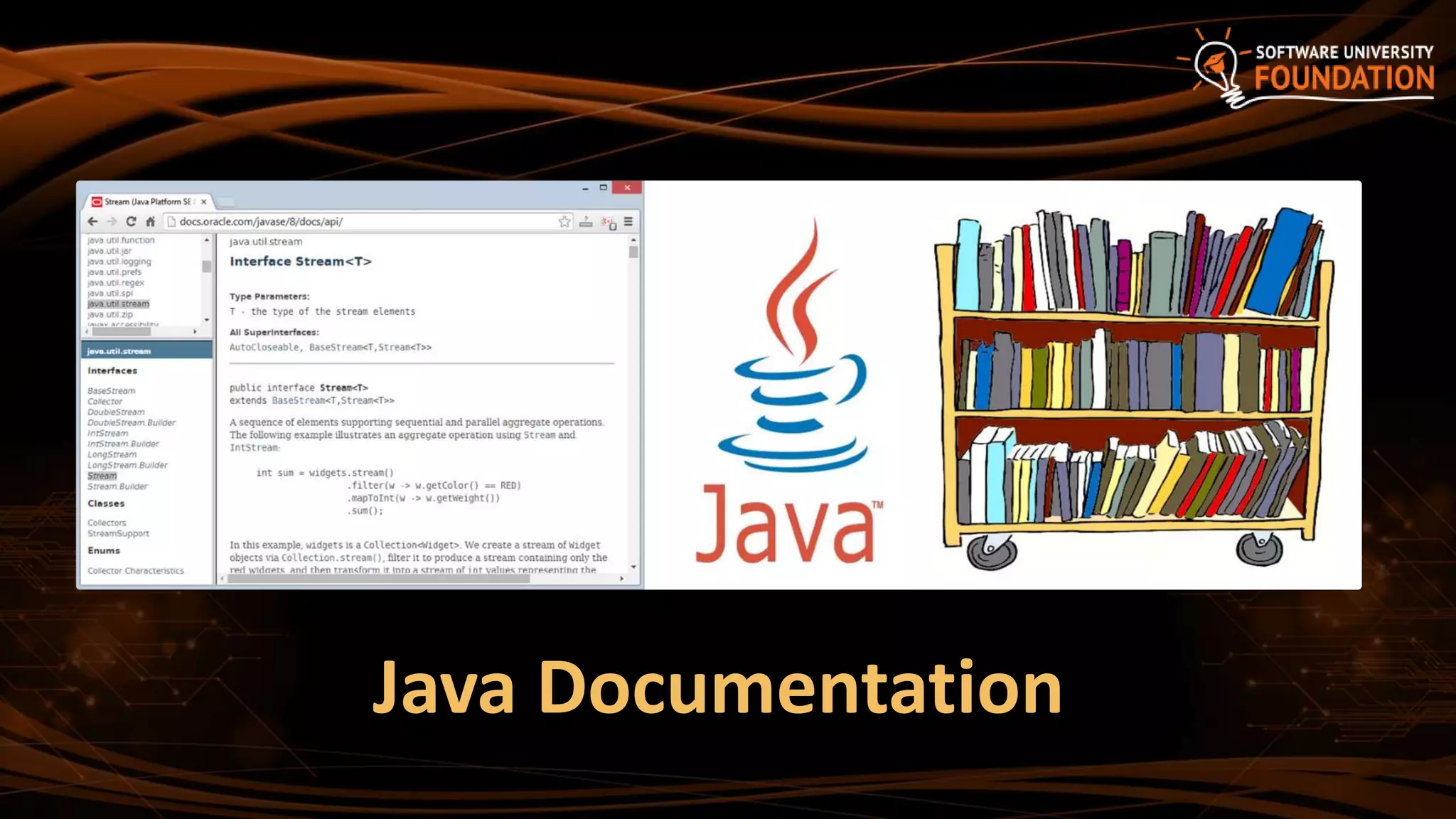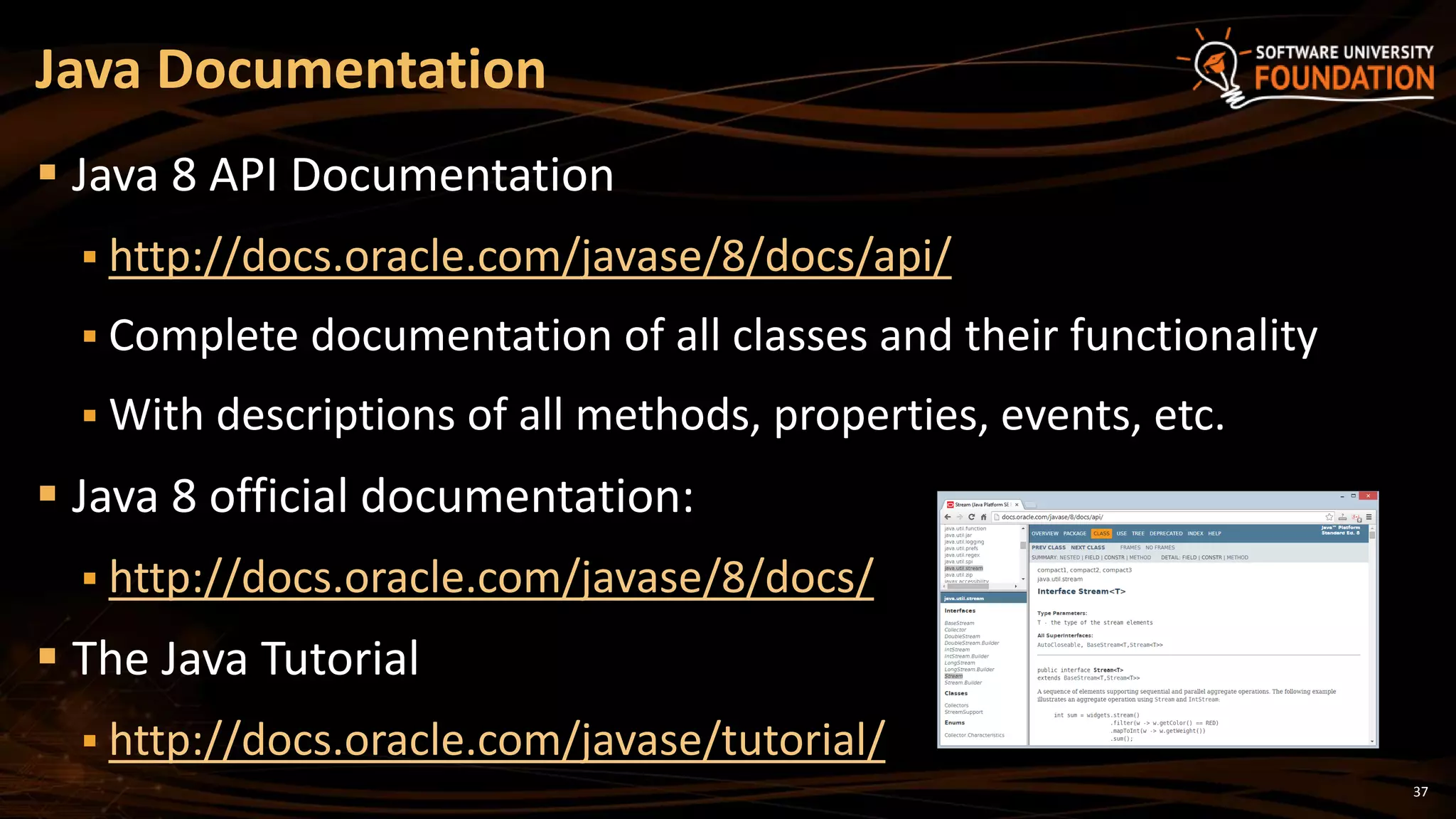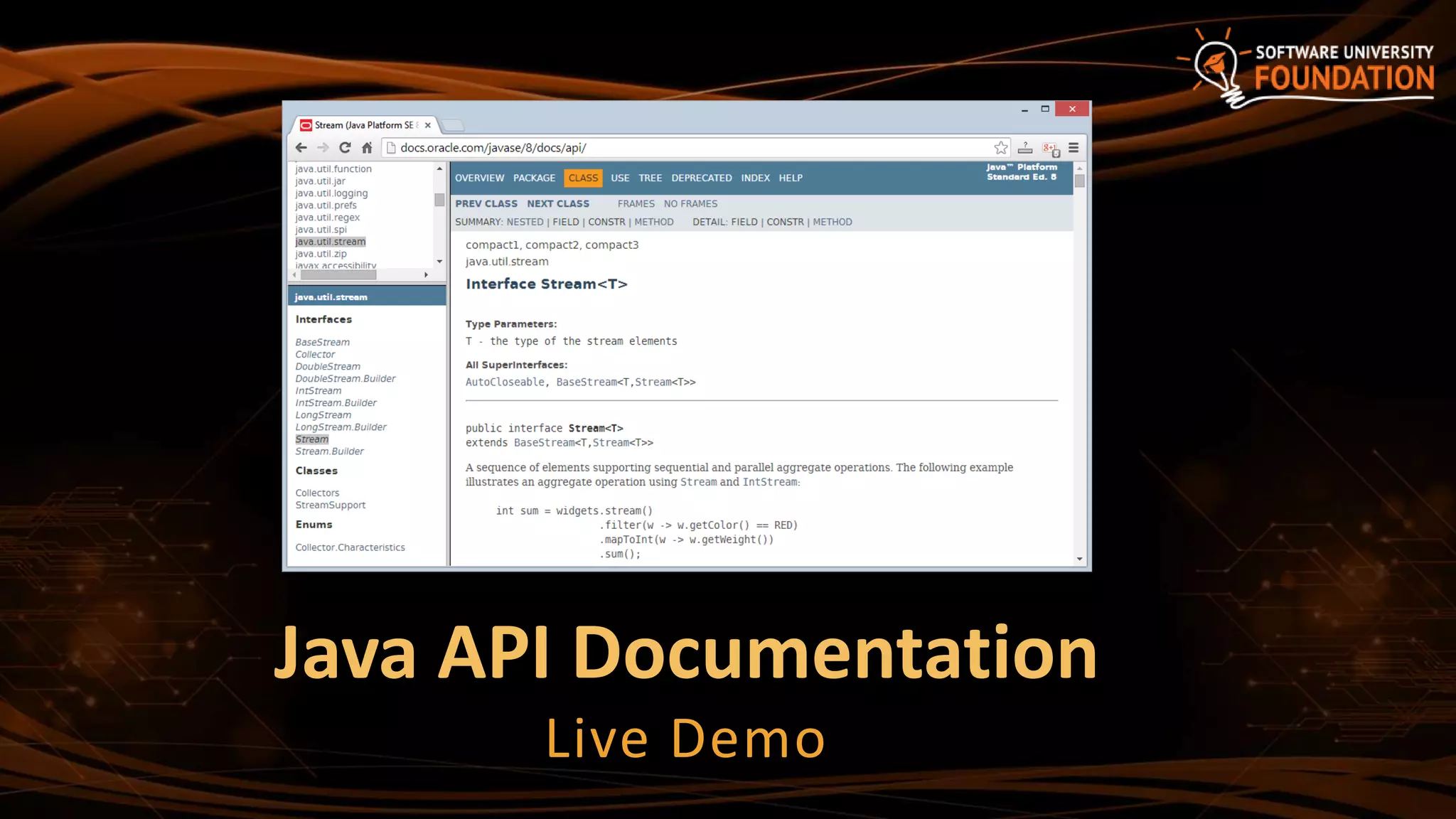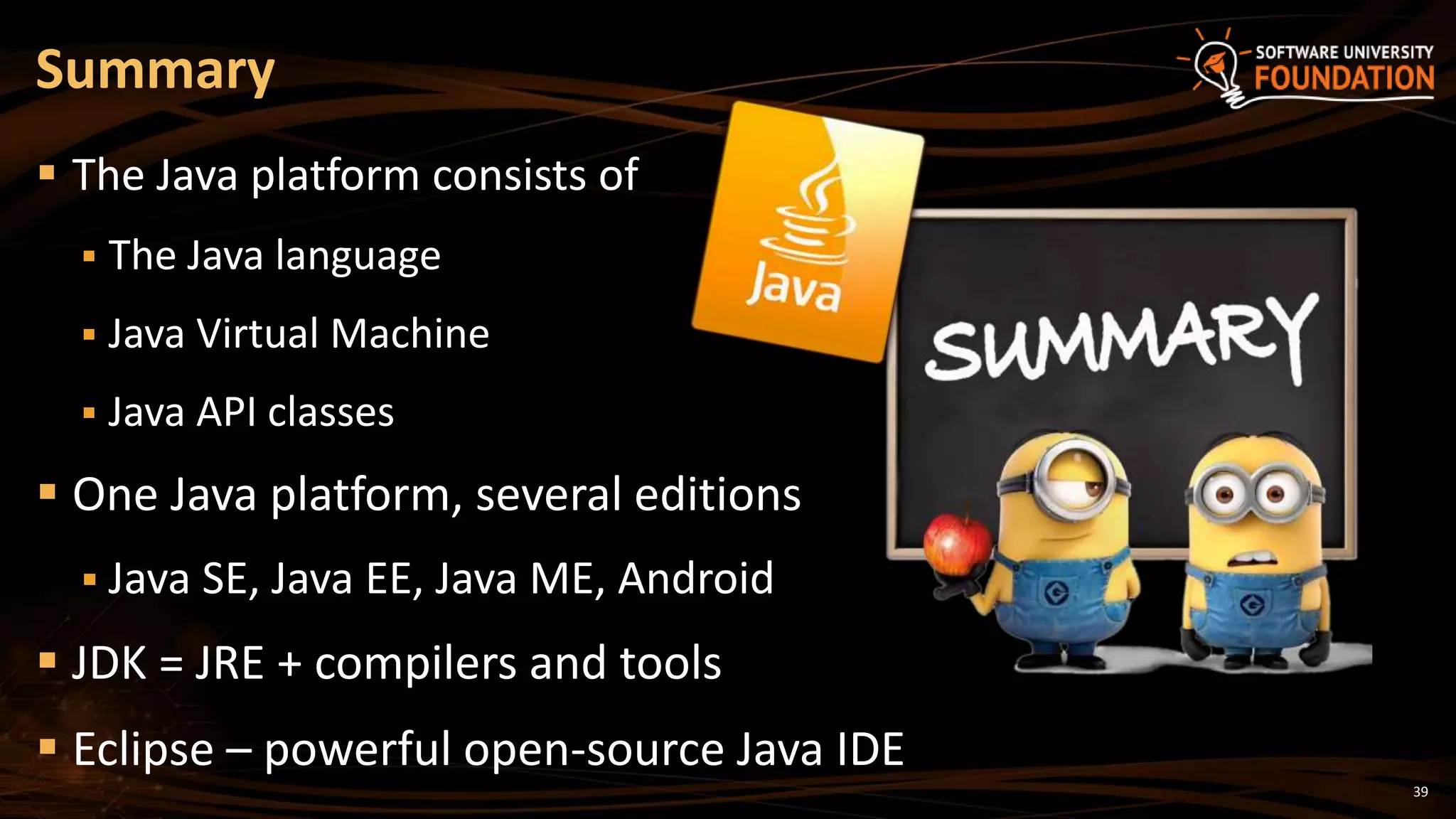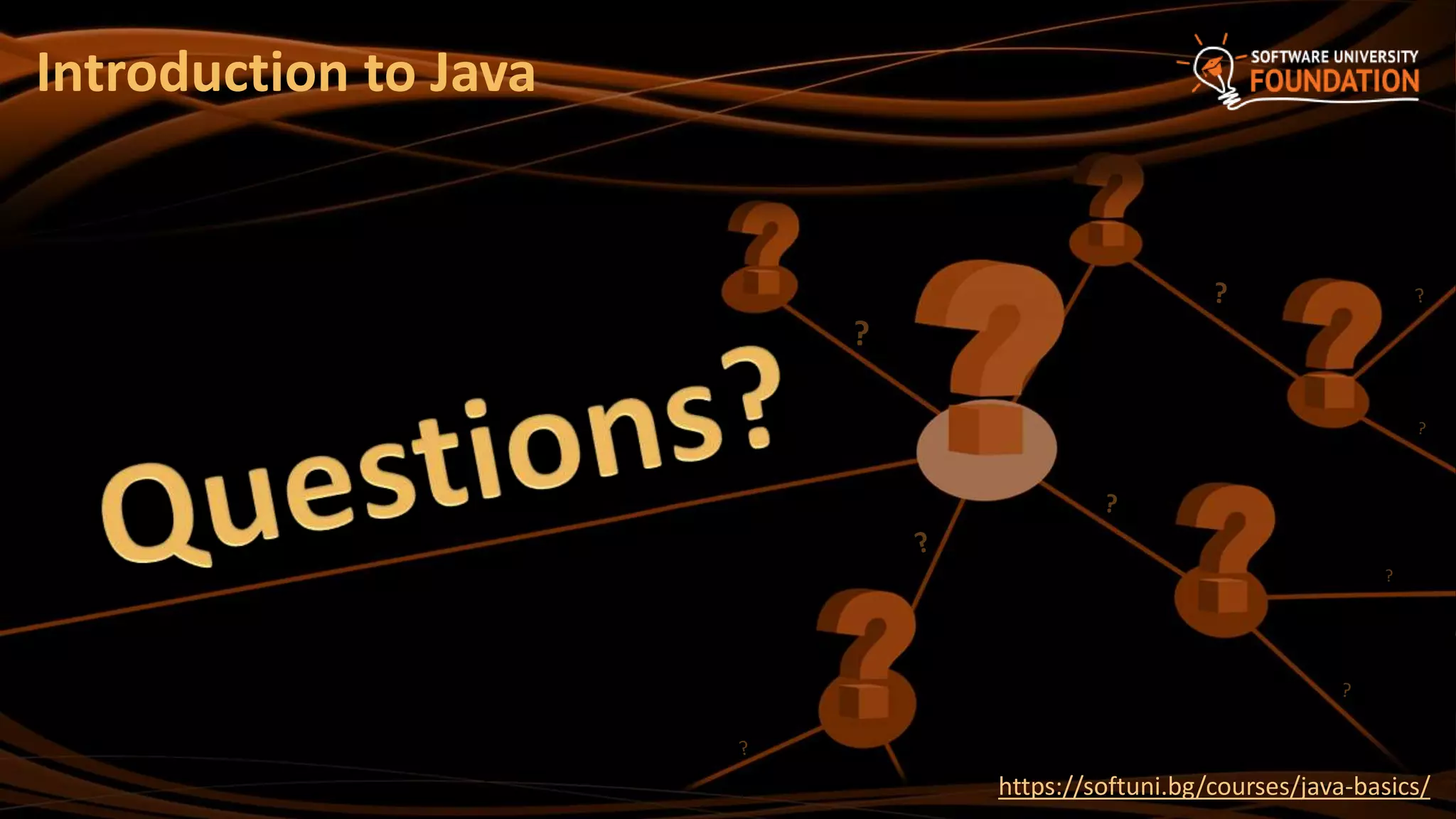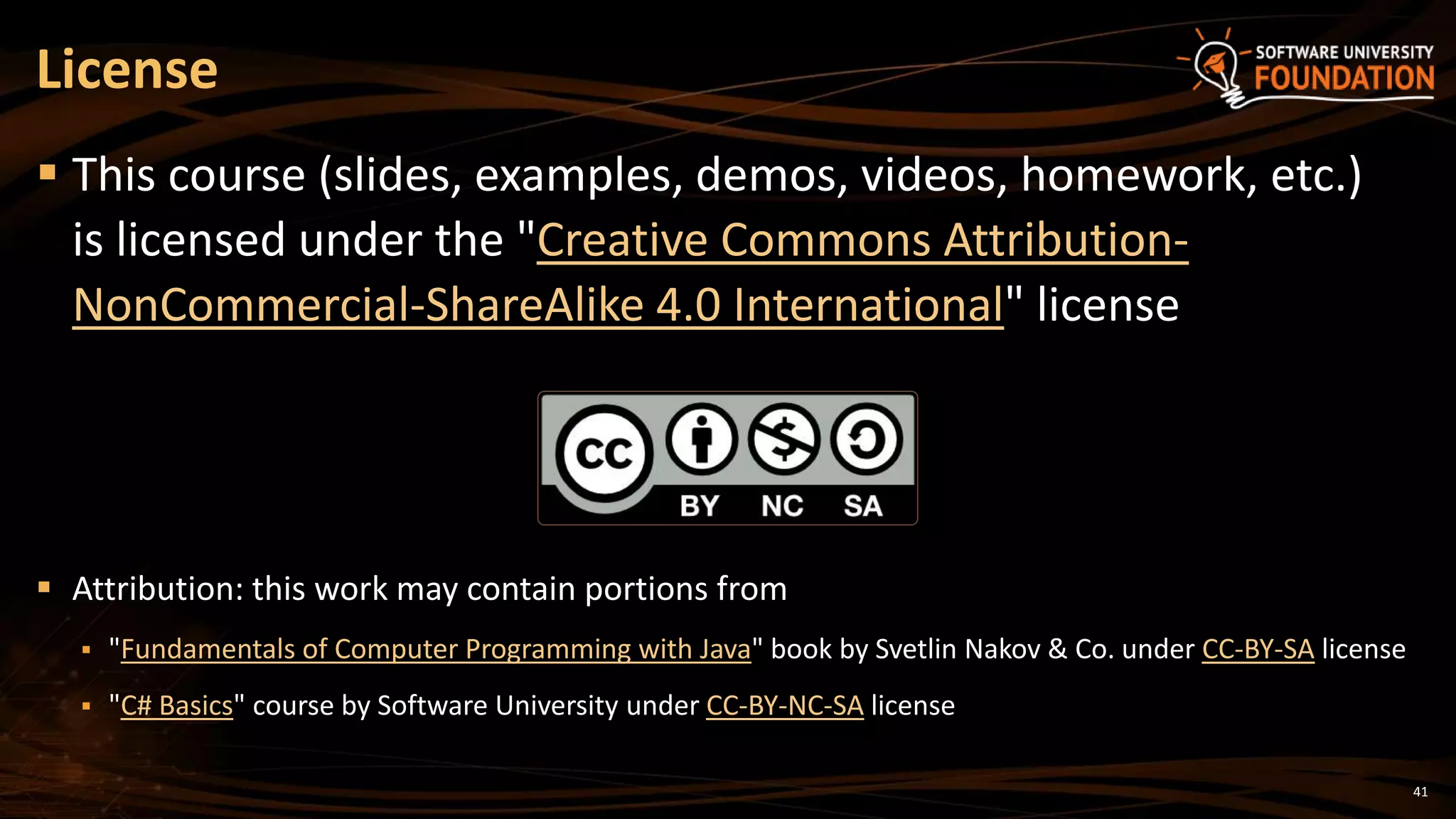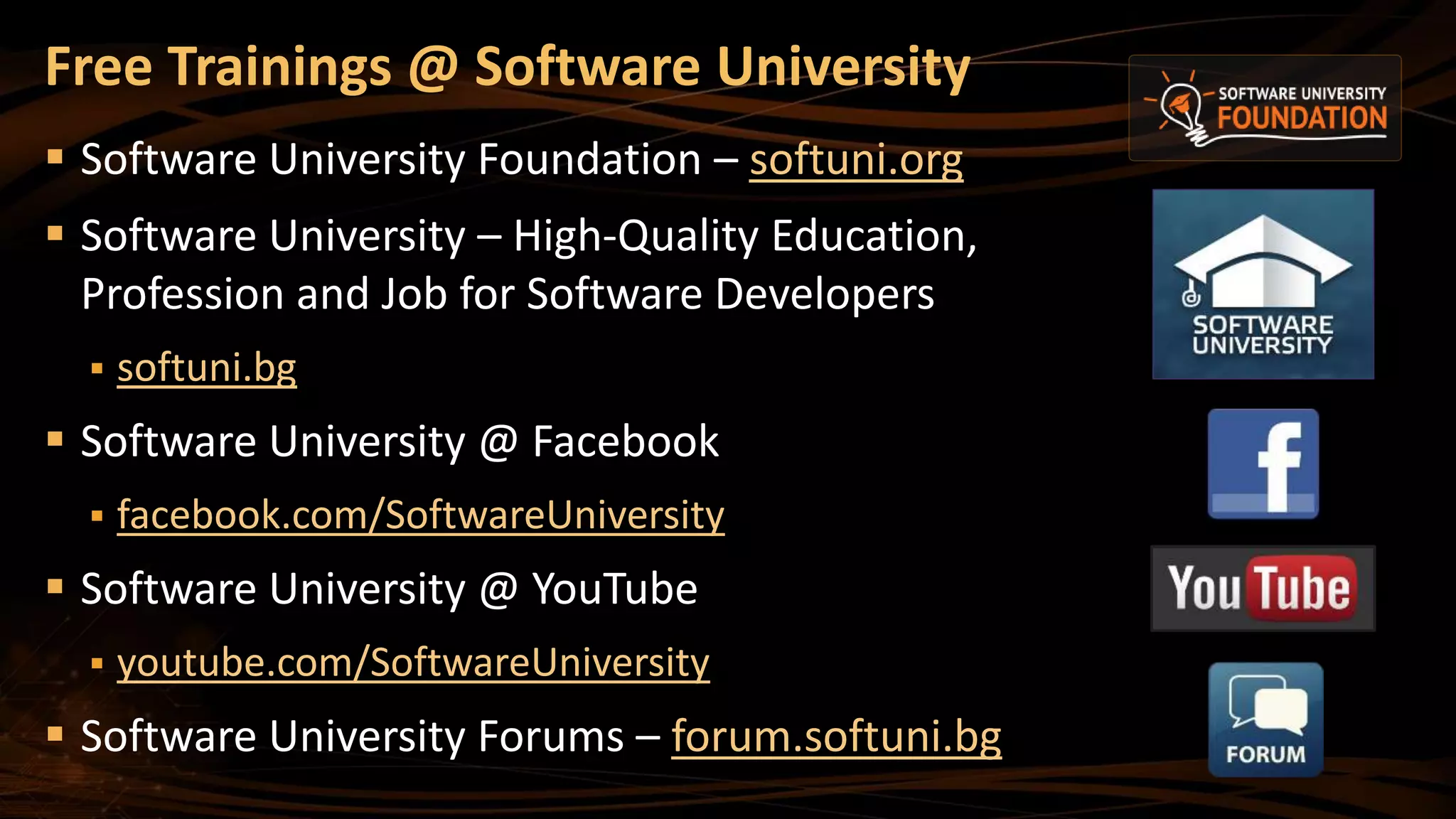The document provides an introduction to Java, covering its programming language, development kits (JDK), virtual machine (JVM), and Integrated Development Environments (IDEs) like Eclipse and NetBeans. It is geared towards beginners with prior coding experience and emphasizes Java's features, portability, and applications across platforms. The course aims to equip users with the skills needed to write and run Java programs while adhering to best coding practices.
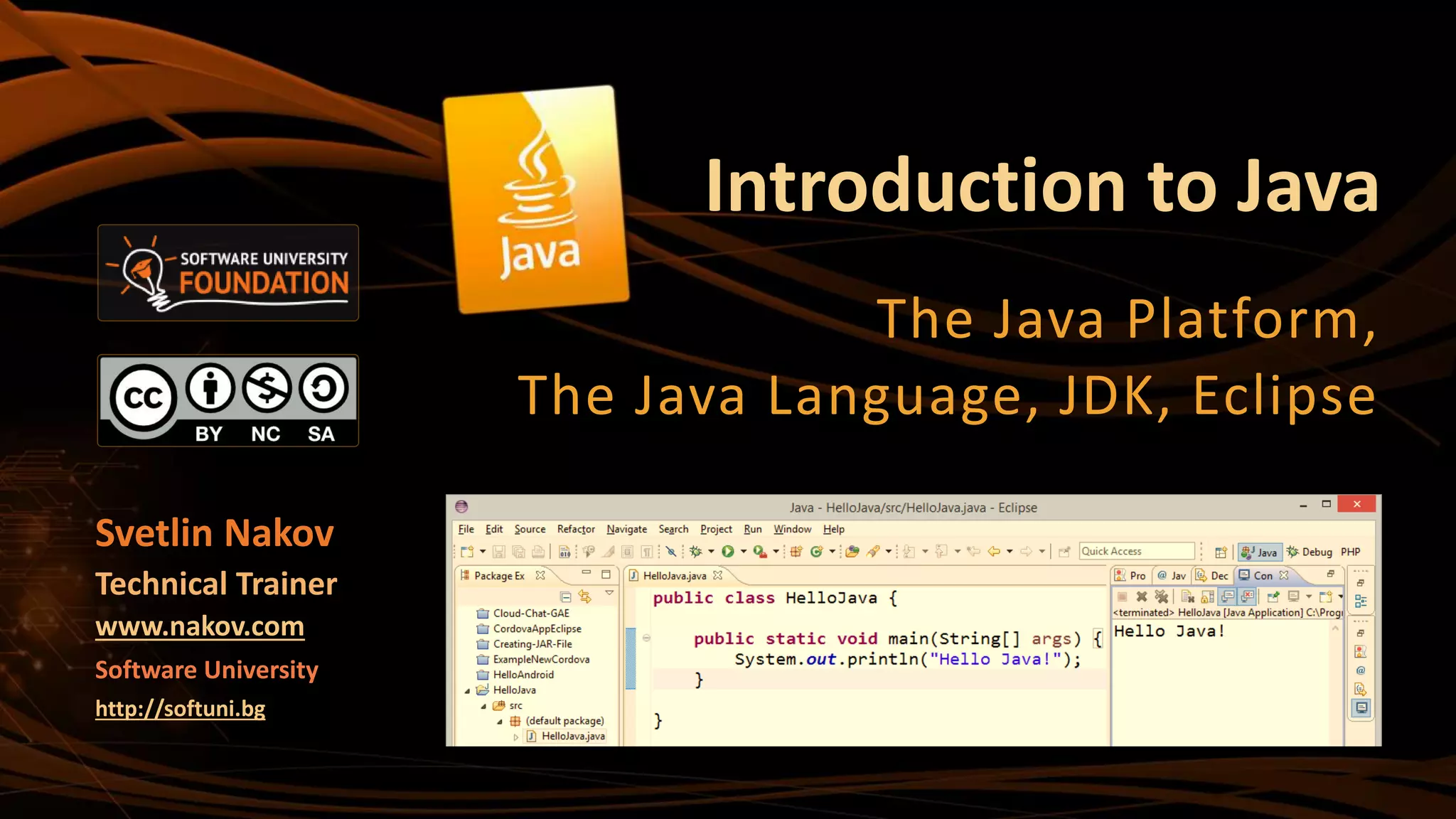
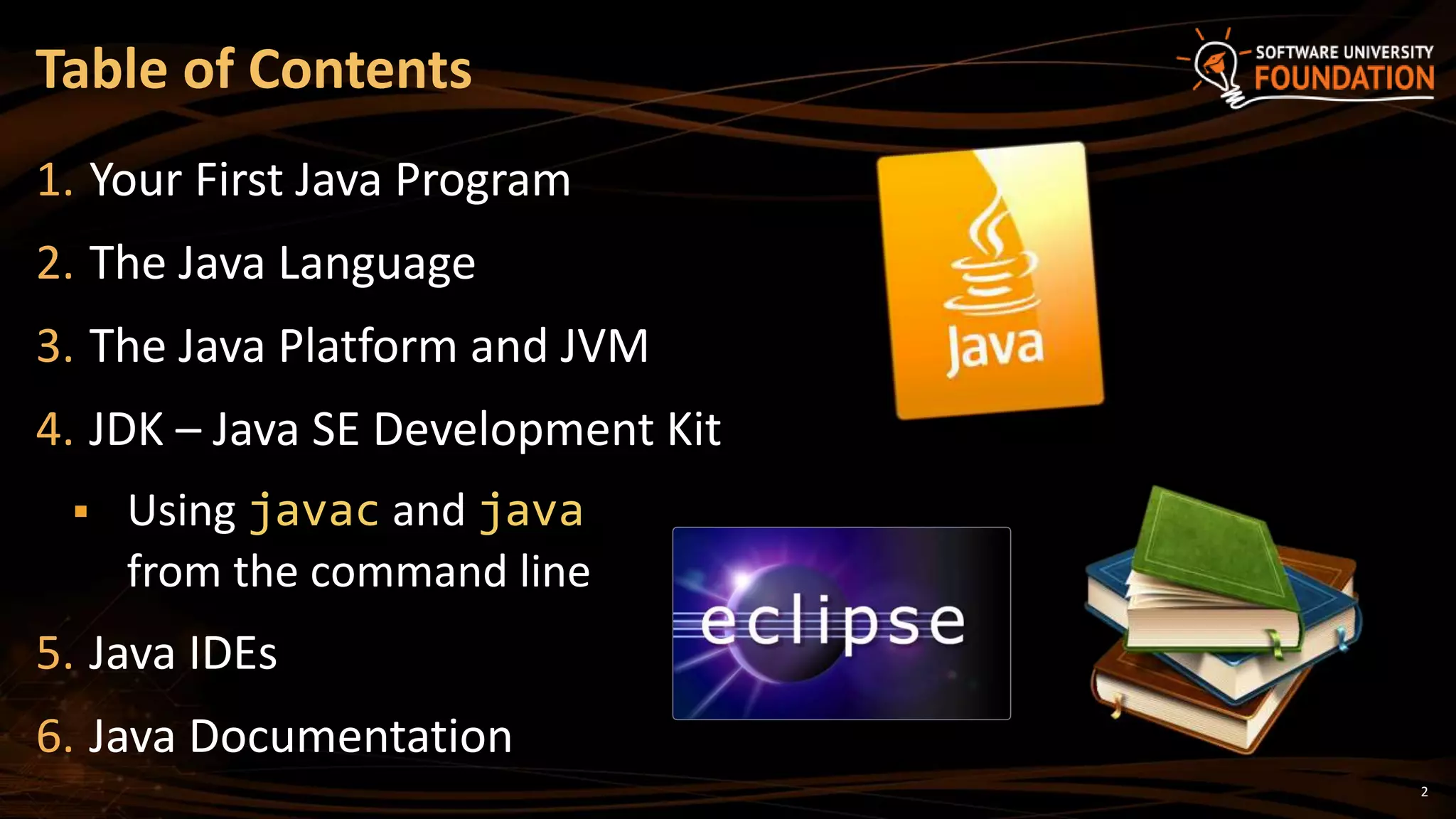
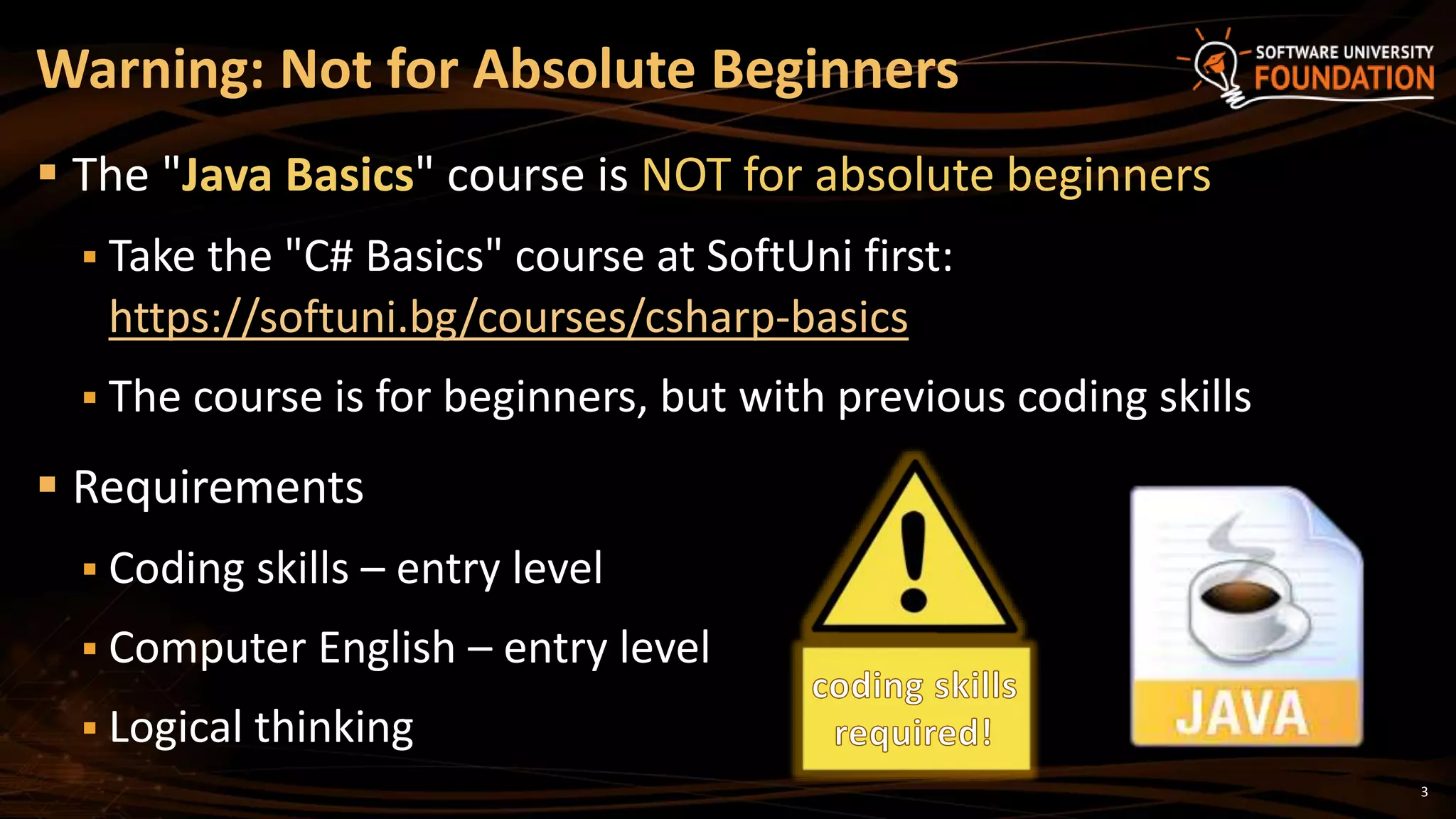
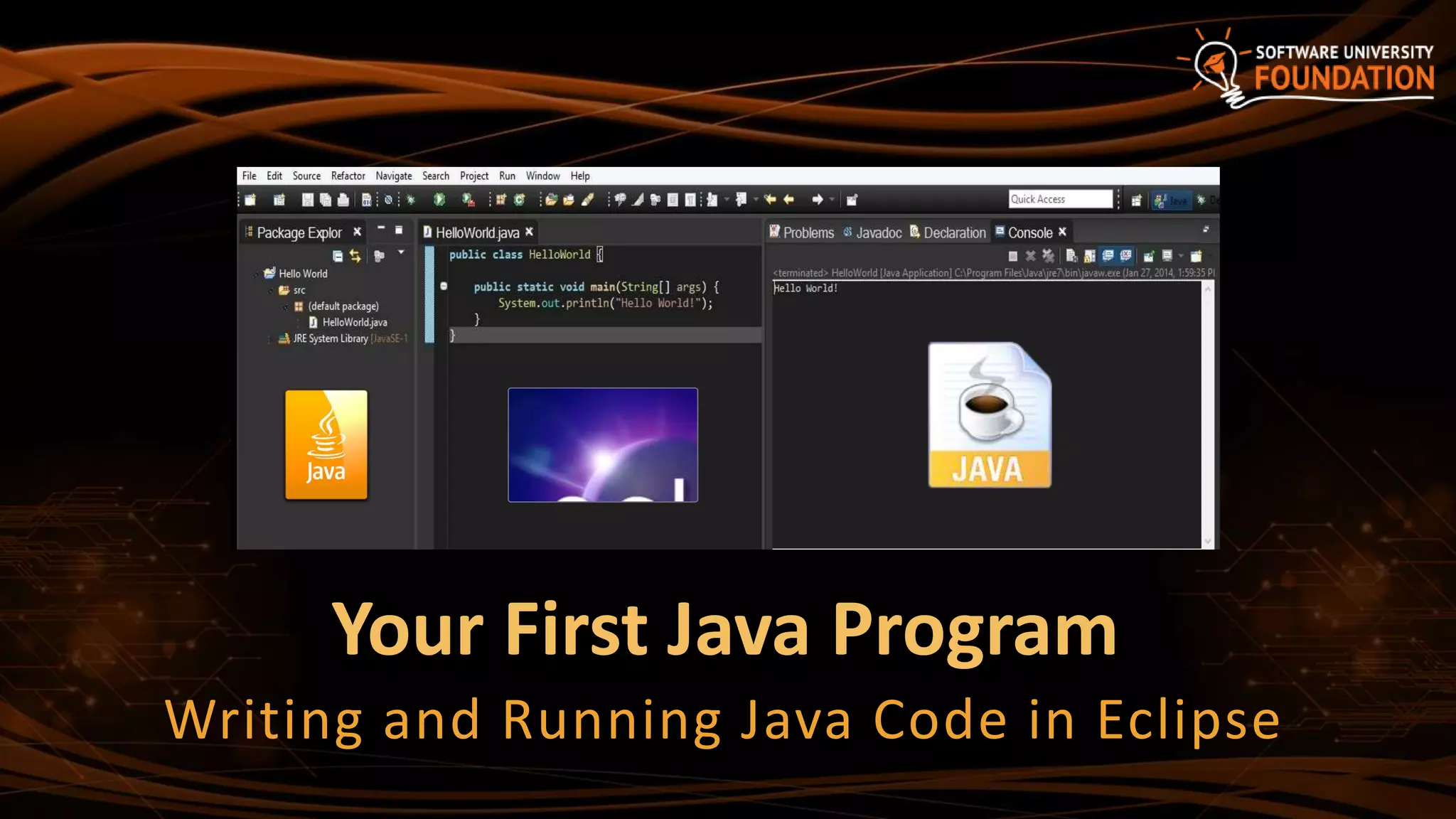
![A sample Java program:
public class HelloJava {
public static void main(String[] args) {
System.out.println("Hello Java!");
}
}
First Look at Java
5](https://image.slidesharecdn.com/1-200321130507/75/01-Introduction-to-programming-with-java-5-2048.jpg)
![public class HelloJava {
public static void main(String[] args) {
System.out.println("Hello Java!");
}
}
Java Code – How It Works?
6
Define a class
"HelloJava"
Define the main(…) method
– the program entry point
Print a text on the console by calling the
method "println" of the class "System"](https://image.slidesharecdn.com/1-200321130507/75/01-Introduction-to-programming-with-java-6-2048.jpg)
![7
Formatting Java Code
public class HelloJava {
public static void main(String[] args) {
System.out.println("Hello Java!");
}
}
The block after the { symbol
is indented right by a TAB.
The } symbol stays under
the block holding the {.
Class names in Java
are in PascalCase.
The { symbol stays
at the same line.
Method names in Java
are in camelCase.](https://image.slidesharecdn.com/1-200321130507/75/01-Introduction-to-programming-with-java-7-2048.jpg)
![File Names Should Match Class Names!
In Java all public classes should stay in a file with the same name
For example, the class HelloJava should be in the file
HelloJava.java
HelloJava.java
public class HelloJava {
public static void main(String args[]) {
System.out.println("Hello Java!");
}
}](https://image.slidesharecdn.com/1-200321130507/75/01-Introduction-to-programming-with-java-8-2048.jpg)
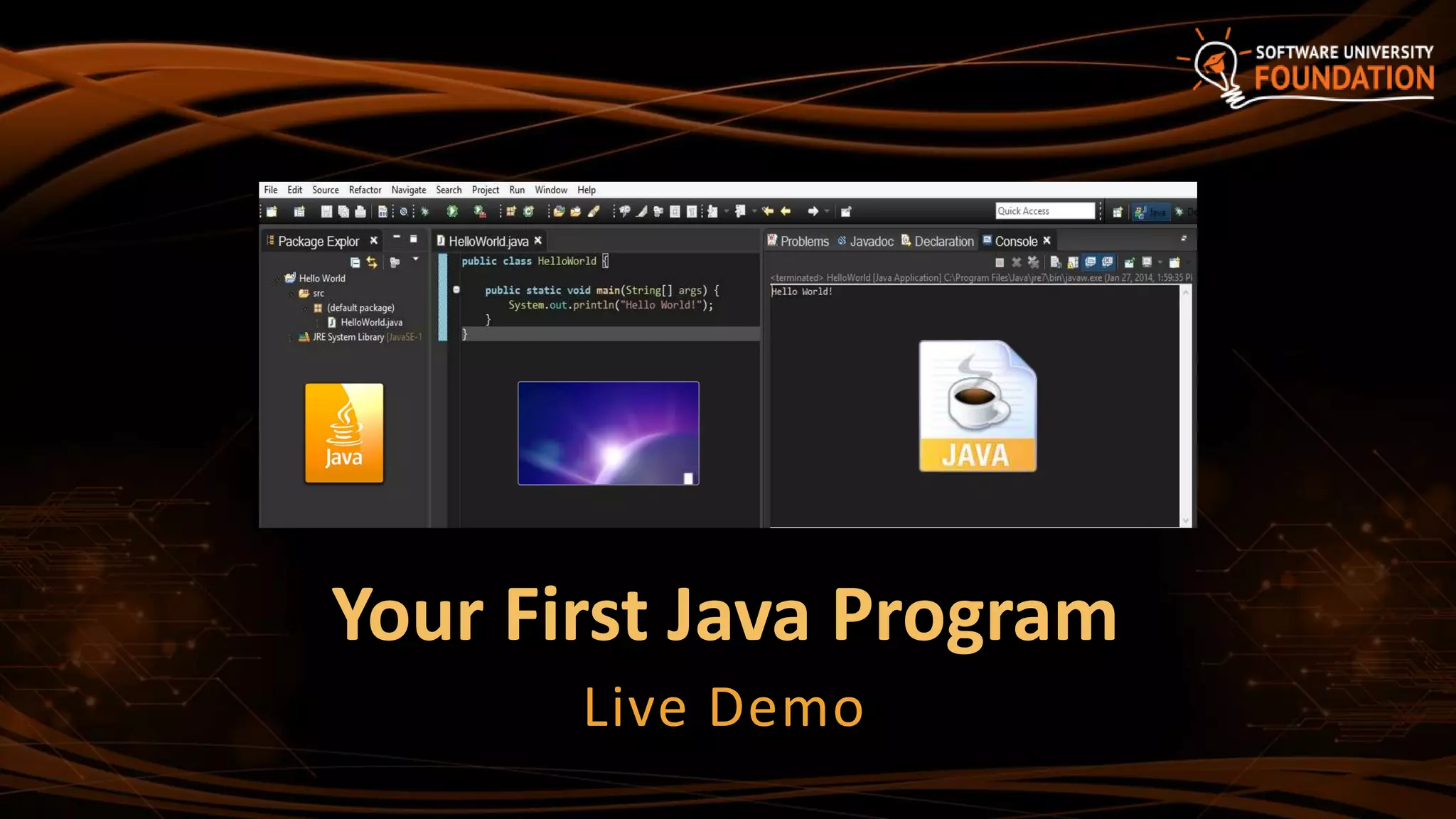
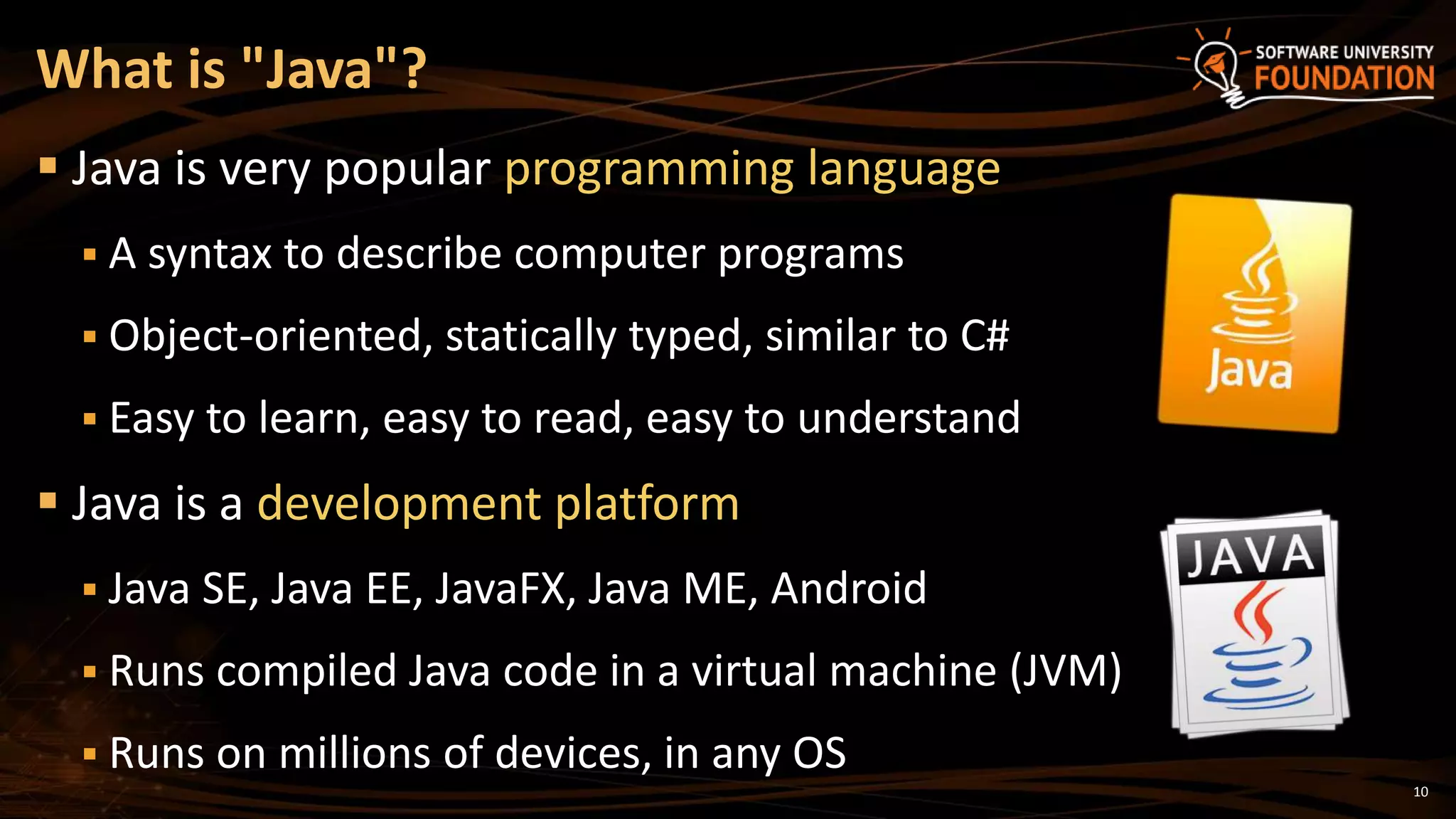
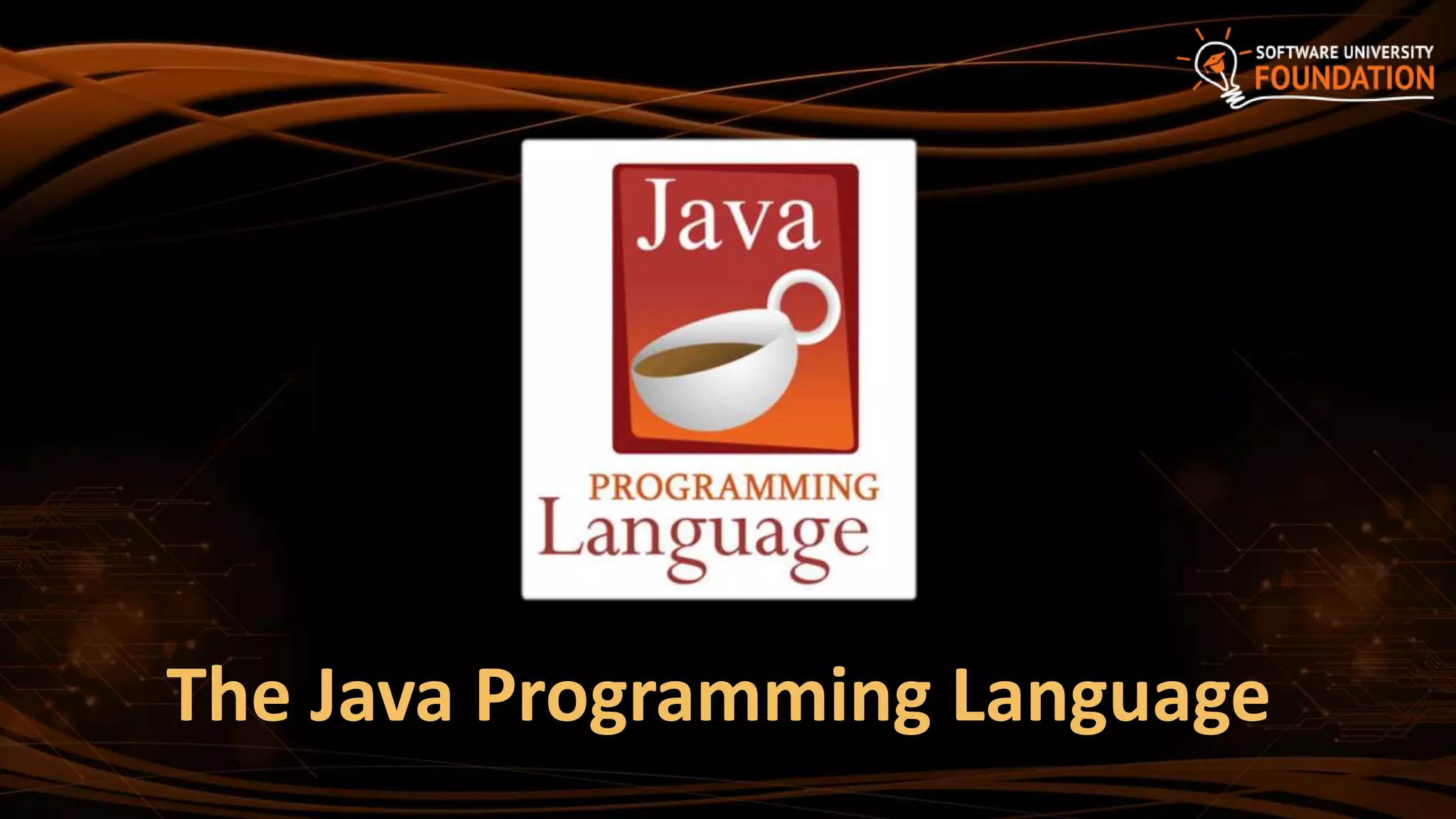
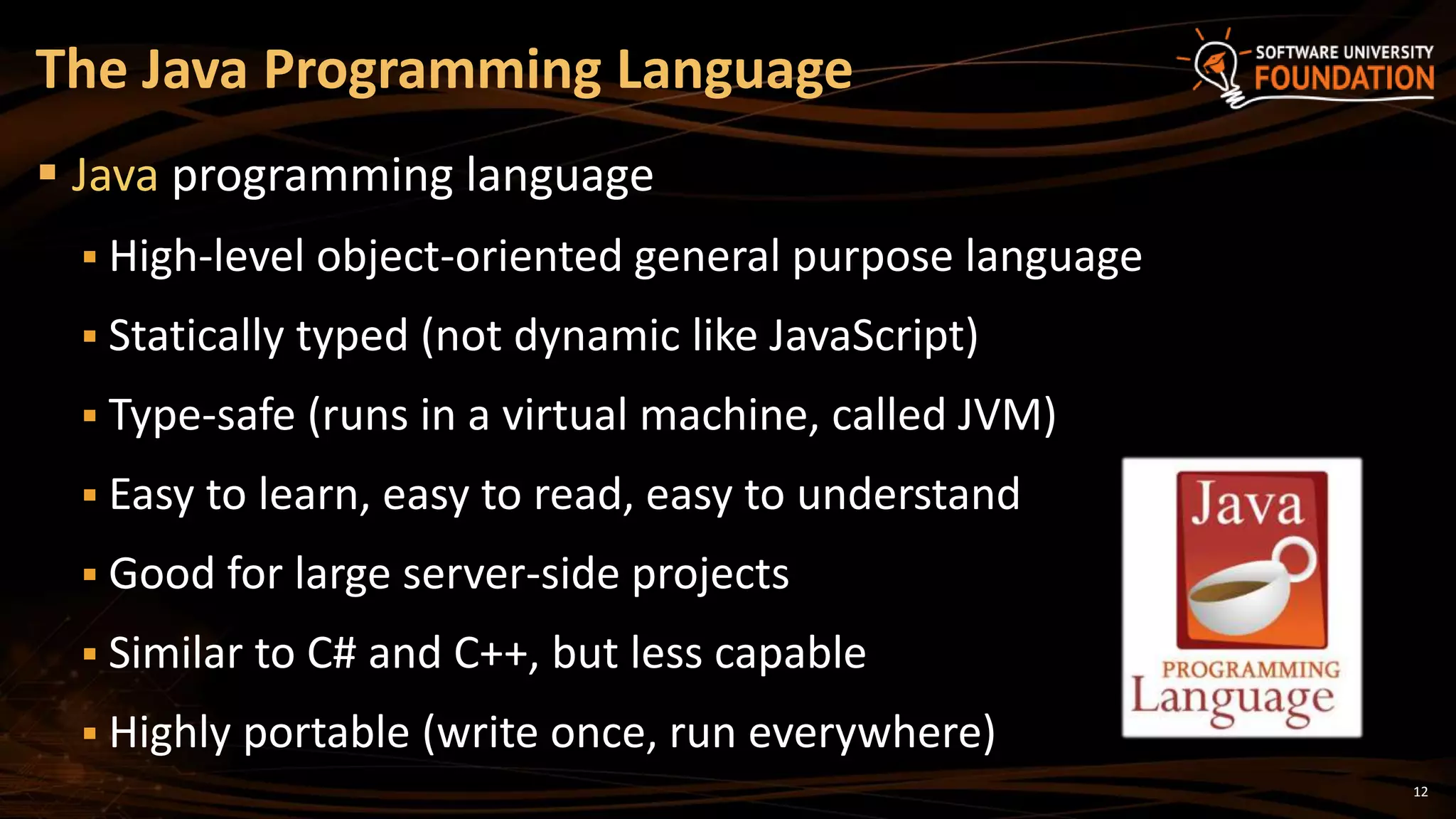
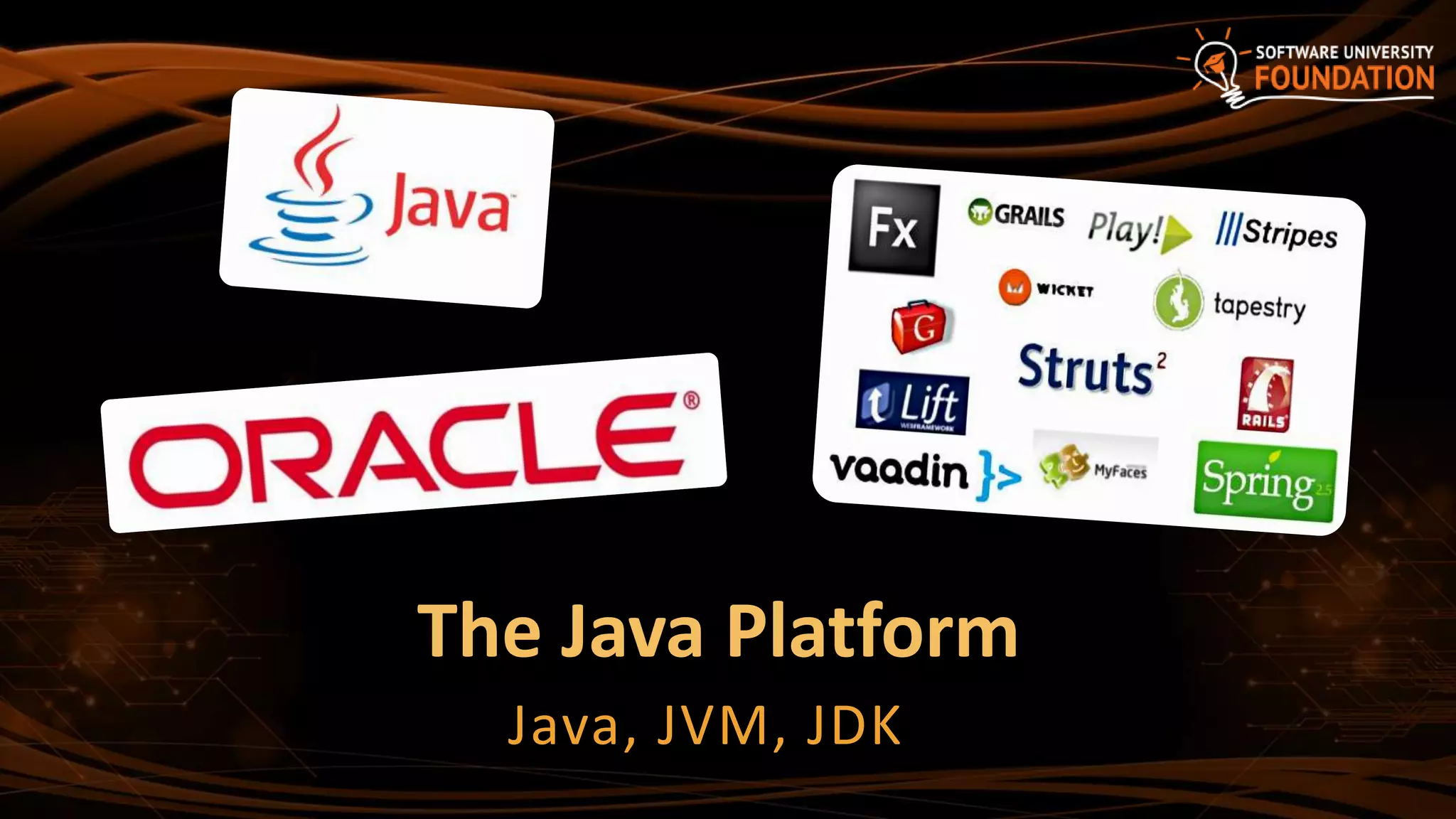
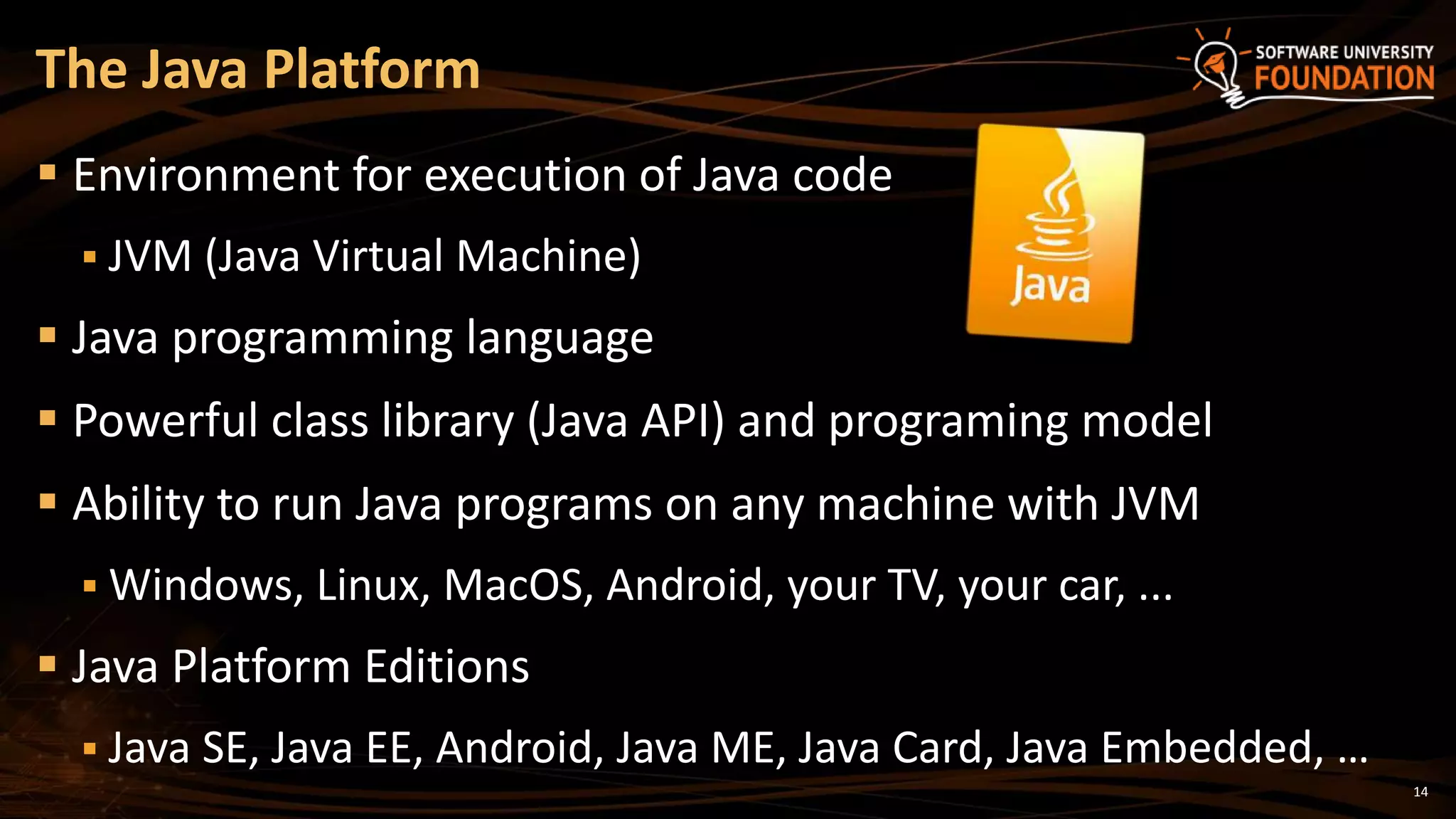
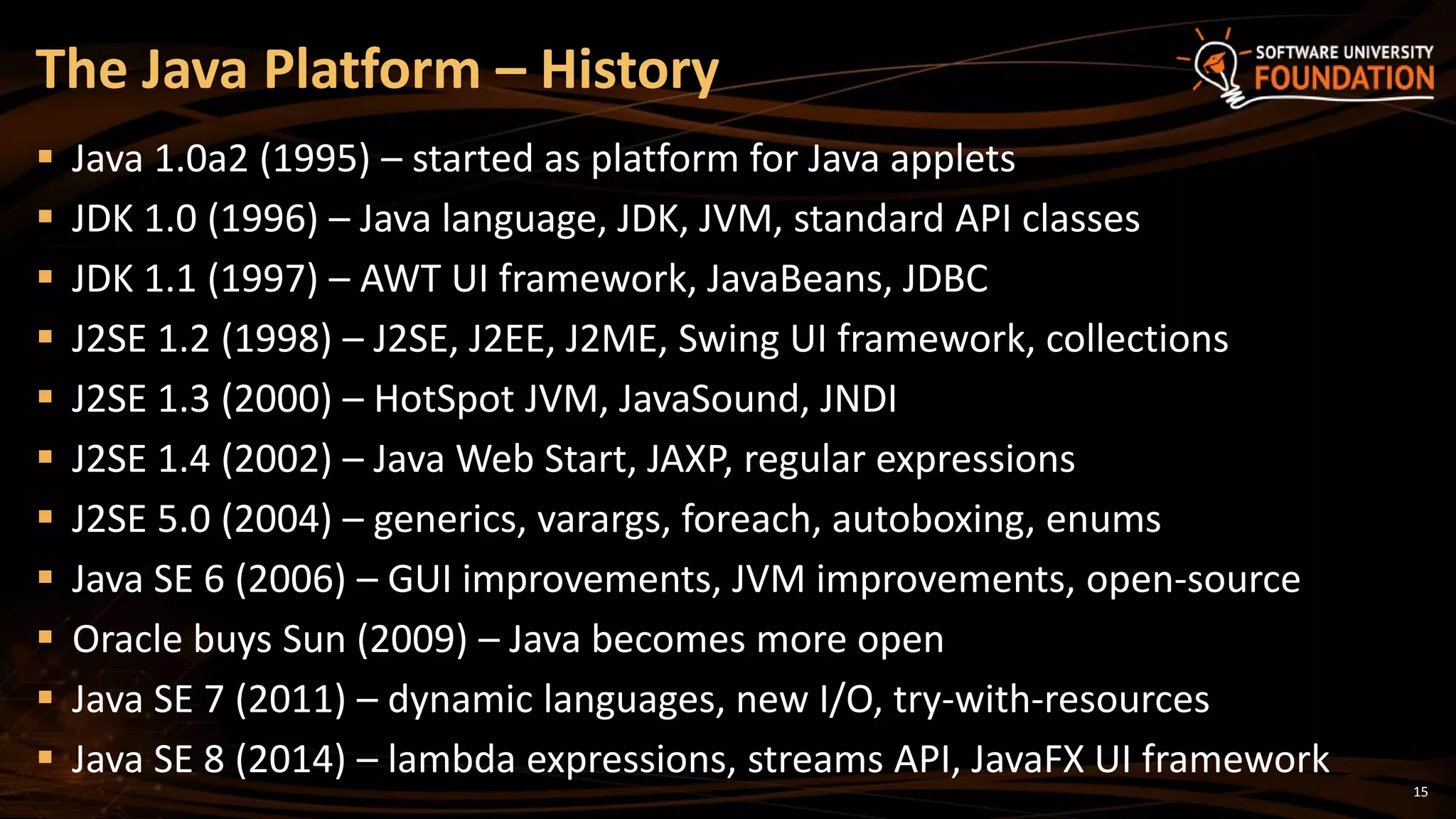
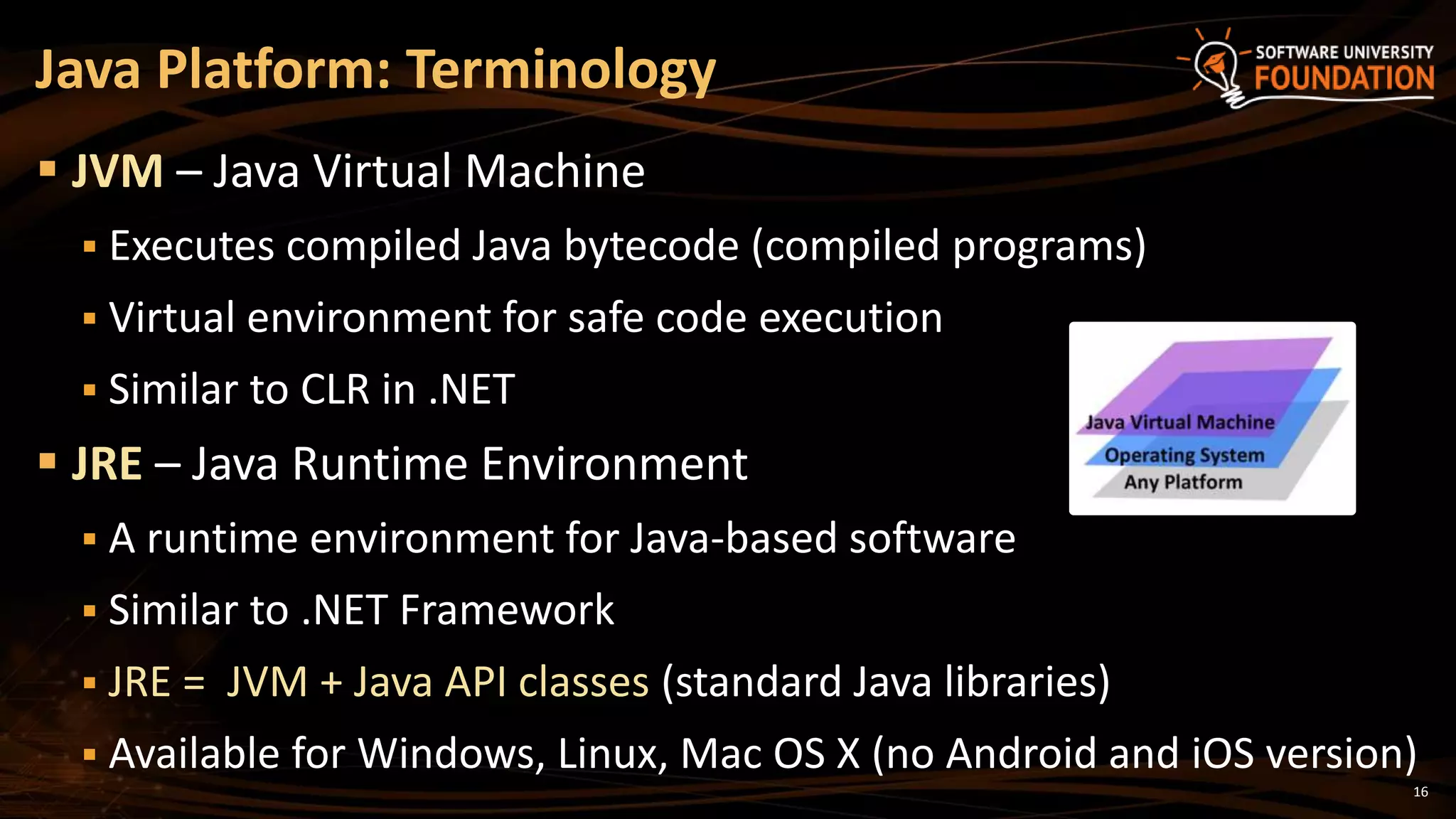
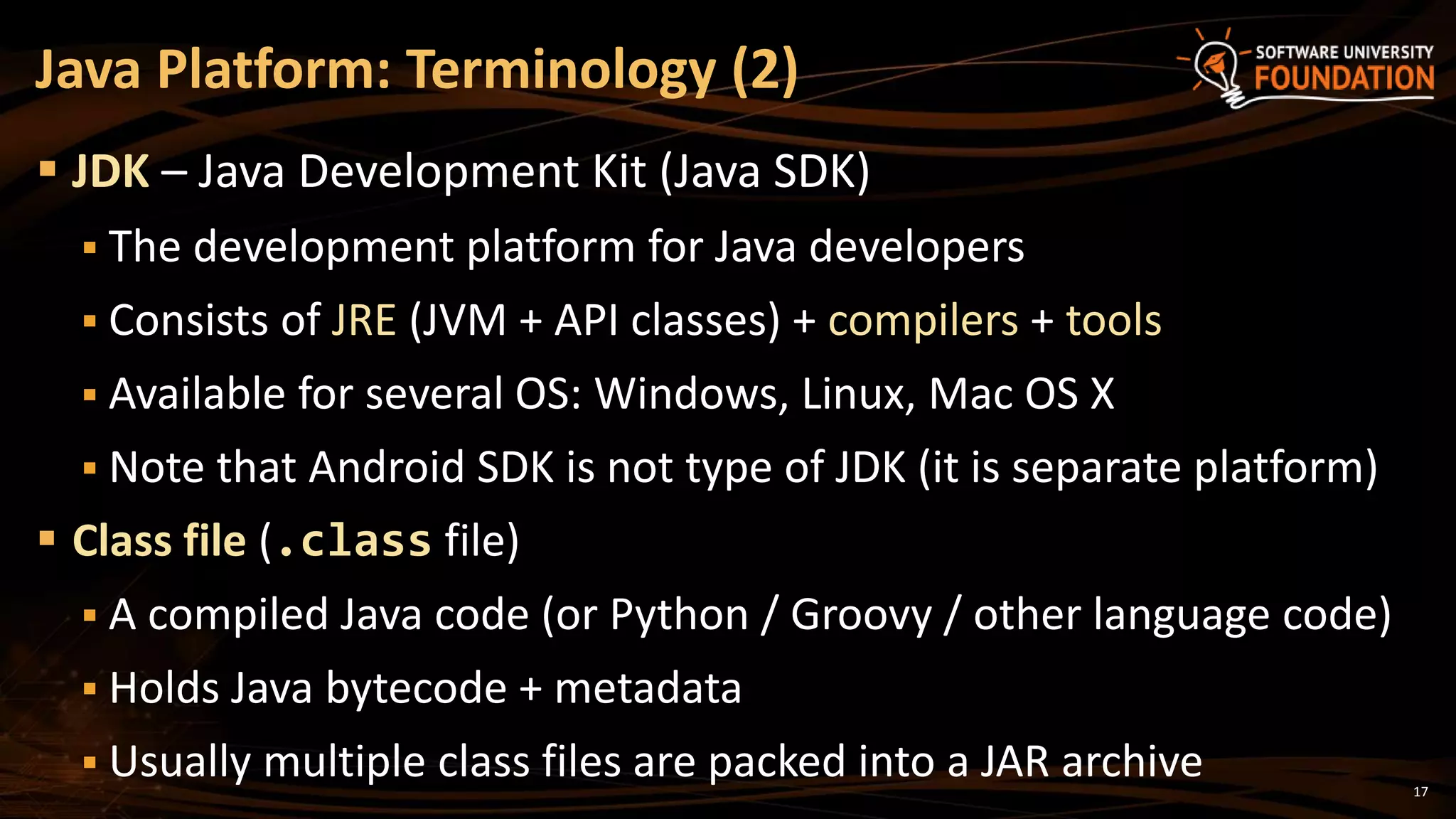
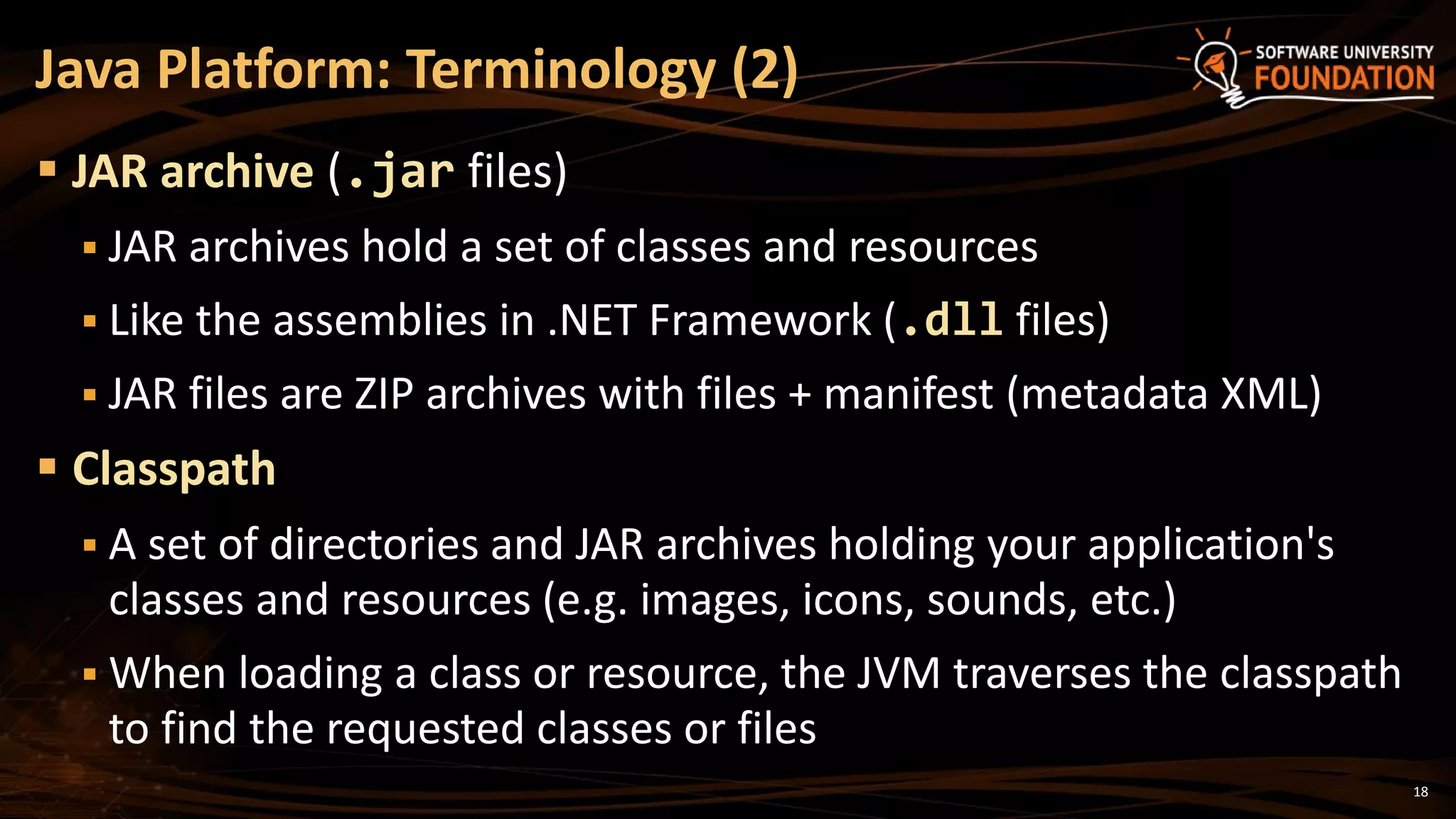
![Java Compilation and Execution
public class HelloJava {
public static void
main(String args[]) {
System.out.println(
"Hello Java!");
}
}
(source code)
Compilation (javac) CAFE BABE 6D61 696E 0100 1628 5B4C
6A61 7661 2F6C 616E 672F 5374 7269
6E67 3B29 5609 0011 0013 0700 1201
0010 6A61 7661 2F6C 616E 672F 5379
7374 656D 0C00 1400 1501 0003 6F75
7401 0015 4C6A 6176 612F 696F 2F50
7269 6E74 5374 7265 616D 3B08 0017
0100 0C48 656C 6C6F 2C20 4A61
(bytecode)Execution (java)
JVM
HelloJava.java HelloJava.class](https://image.slidesharecdn.com/1-200321130507/75/01-Introduction-to-programming-with-java-19-2048.jpg)
